June 30, 2019 - Biplanes and Brews at the Military Aviation Museum in Virginia Beach
|
Jim G. is building a Fokker D-7 replica down in Vienna, Virginia, and I am, of course, building the Fokker DR-1 Triplane (or used to be). Anyways, we have gotten together a few times to check out each other's projects.
The Military Aviation Museum down in Virginia Beach has probably the best collection of airworthy DR-1s and D-7s in the country. They have an annual WWI airshow each Fall. Last year Jim and I wanted to fly down and attend but we got rained out. This year, however, it was a go.
I would be picking Jim up at Leesburg Executive Airport (KJYO), then we would head southeast towards Virginia Beach.
Although the forecast looked promising Saturday night, the reality Sunday morning was somewhat different, especially heading west. There was a 1,500 foot overcast over Baltimore. Usually I fly over Frederick Airport's Class D so I don't have to talk to them but the ceiling was too low for that today. I had to get a transition from the Tower. This Tower had me report entering the Class D and exiting. I liked their technique. Many Tower's just say "transition approved", that's the last you hear from them, and you wonder if they even care where you are.
I was barely able to squeeze between the ceiling and the mountain range just west of Frederick. If I didn't know the area so well, I might have turned back. But the weather was better on the west side of the range. I flew over Jan Scott's old Flying Cow airfield then headed south to Leesburg, where I have not flown into before. Leesburg is within the stupid SFRA but there is a special cutout for it so you don't have to go through the usual SFRA procedures which are such a pain. For Leesburg you just have to squawk 1226 heading in and out.
So over Jan Scott's place, I started squawking 1226 and headed direct Leesburg. I tuned in their WX AWOS-3 frequency for the weather and was surprised to hear it say Leesburg had a temporary Tower. Not a problem, I just didn't expect to be dealing with a Tower. I called up the tower and they cleared me in for landing on runway 17.
Here I'm over Liberty Reservoir. As you can see the weather is cruddy.
|
| |
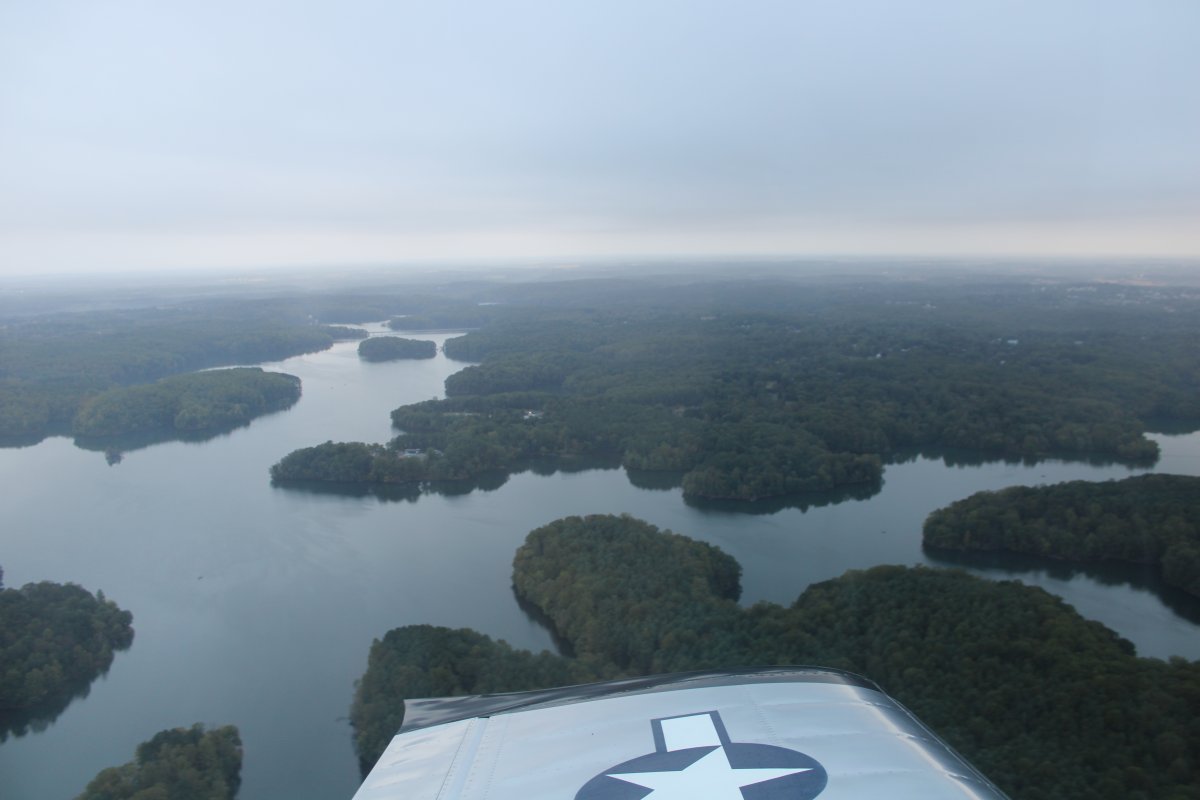 |
|
|
Parked on the ramp at Leesburg. Not in sight to the right is a portable Tower. I waved to the guy in the Tower.
Jim was waiting for me (and took this picture). He hopped in the RV and in no time we were winging our way southeast towards Virginia Beach.
|
| |
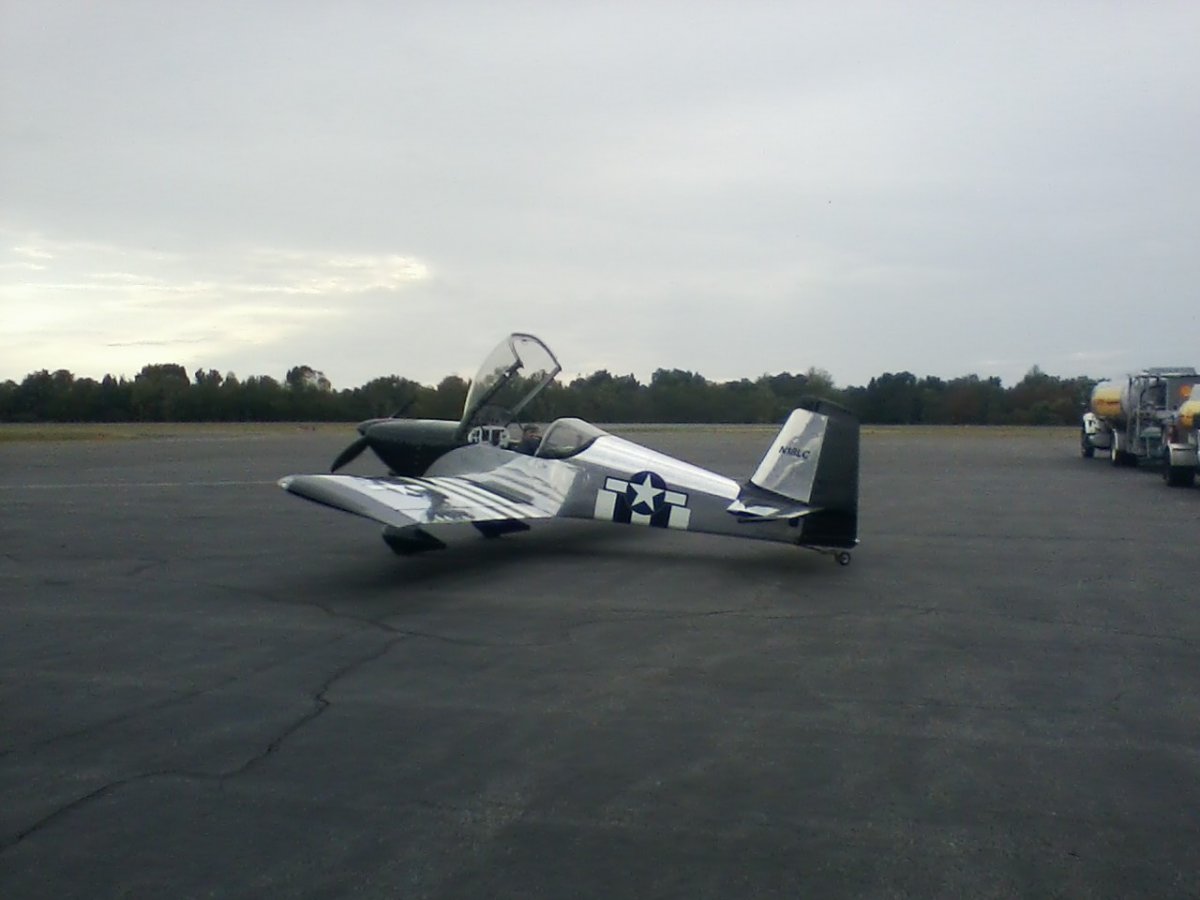 |
|
| Looking down at the Pamunkey River (I think) which flows to the York River which flows to the Chesapeake Bay. Lot of rivers flying from Baltimore to Norfolk. |
| |
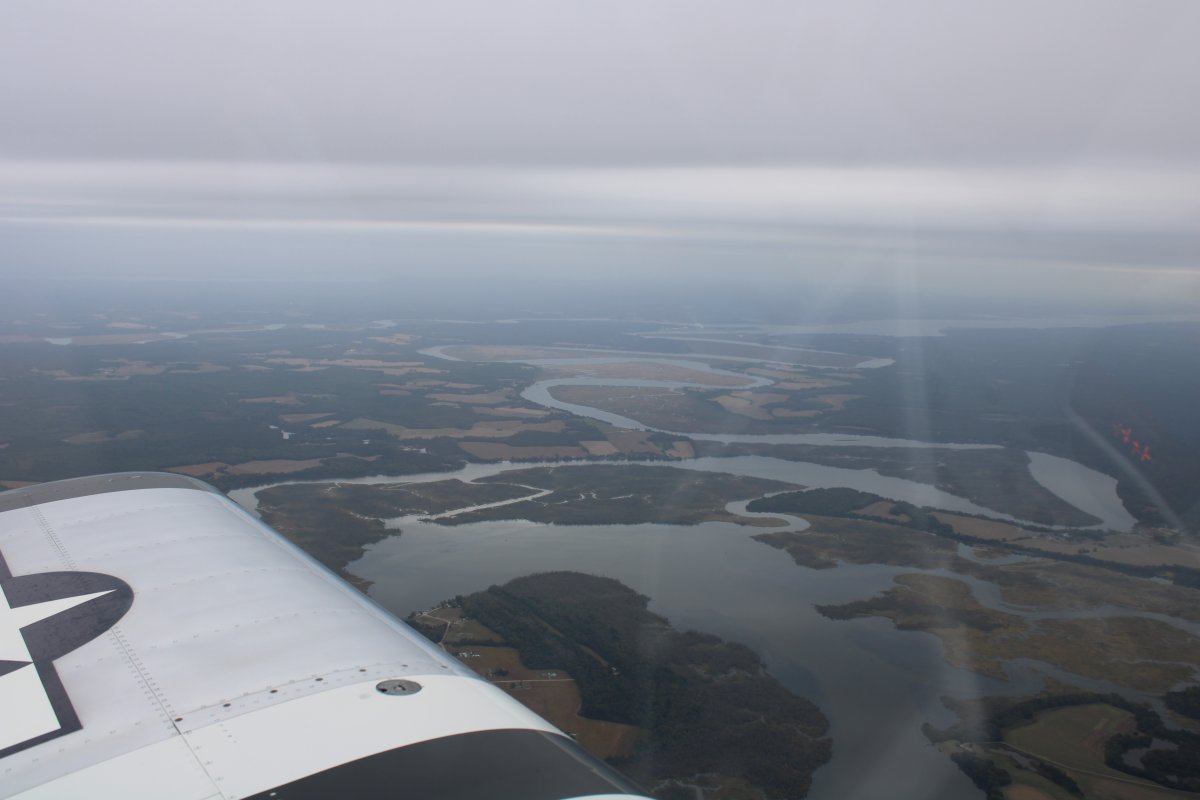 |
|
|
Looking at the James River. The ceiling has been steadily lifting and we are able to climb and make better speed.
|
| |
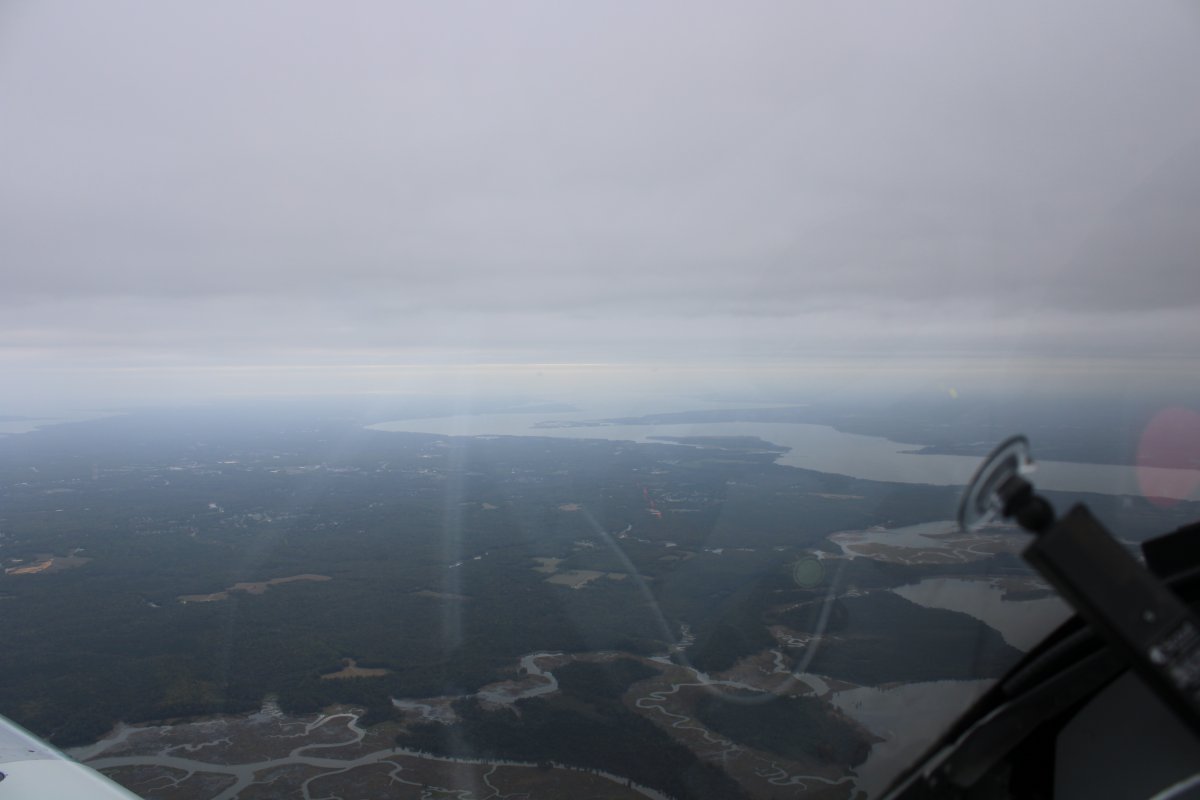 |
|
| Still the James River. Looking down at the Jamestown Site, where it all began in 1607; the first permanent English settlement in the Americas. |
| |
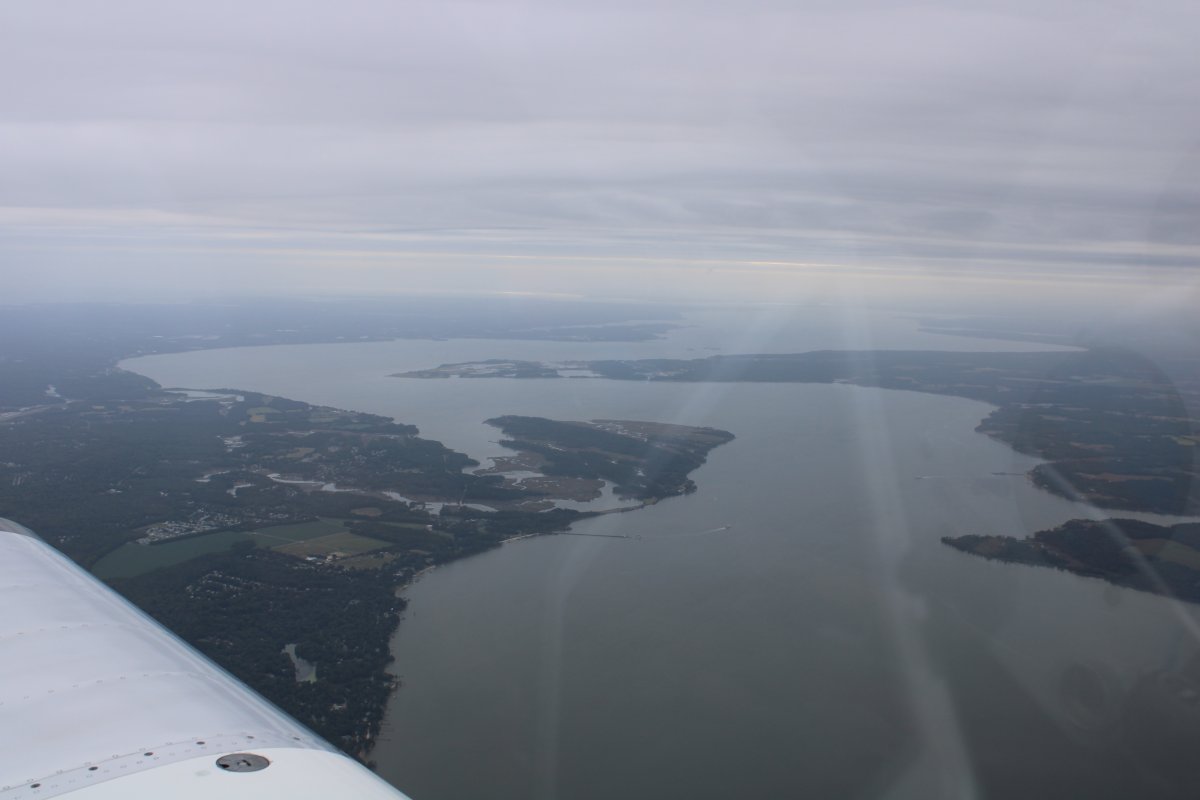 |
|
|
We landed on the long and wide grass airstrip, parked next to a Bonanza in the visitor's ramp, paid for our airshow tickets, and entered the show. Here, Jim is standing in front of a Fokker D-7, which is what he is building in his garage.
Thanks to Jim, I got to meet Gerald Yagen (owner and founder of the Military Aviation Museum), the Head of Operations, and the Head Mechanic of the museum.
|
| |
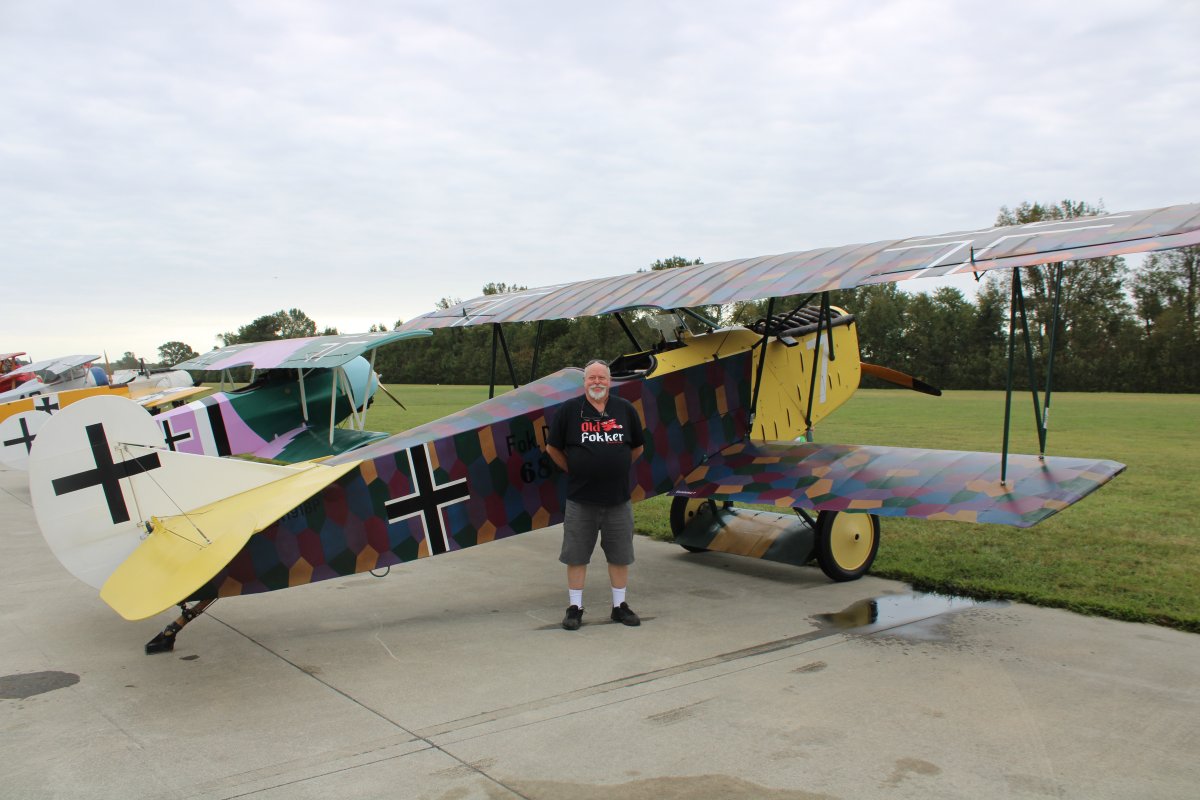 |
|
| Yours truly standing in front of a Fokker DR-1, the plane I am allegedly building in my basement. |
| |
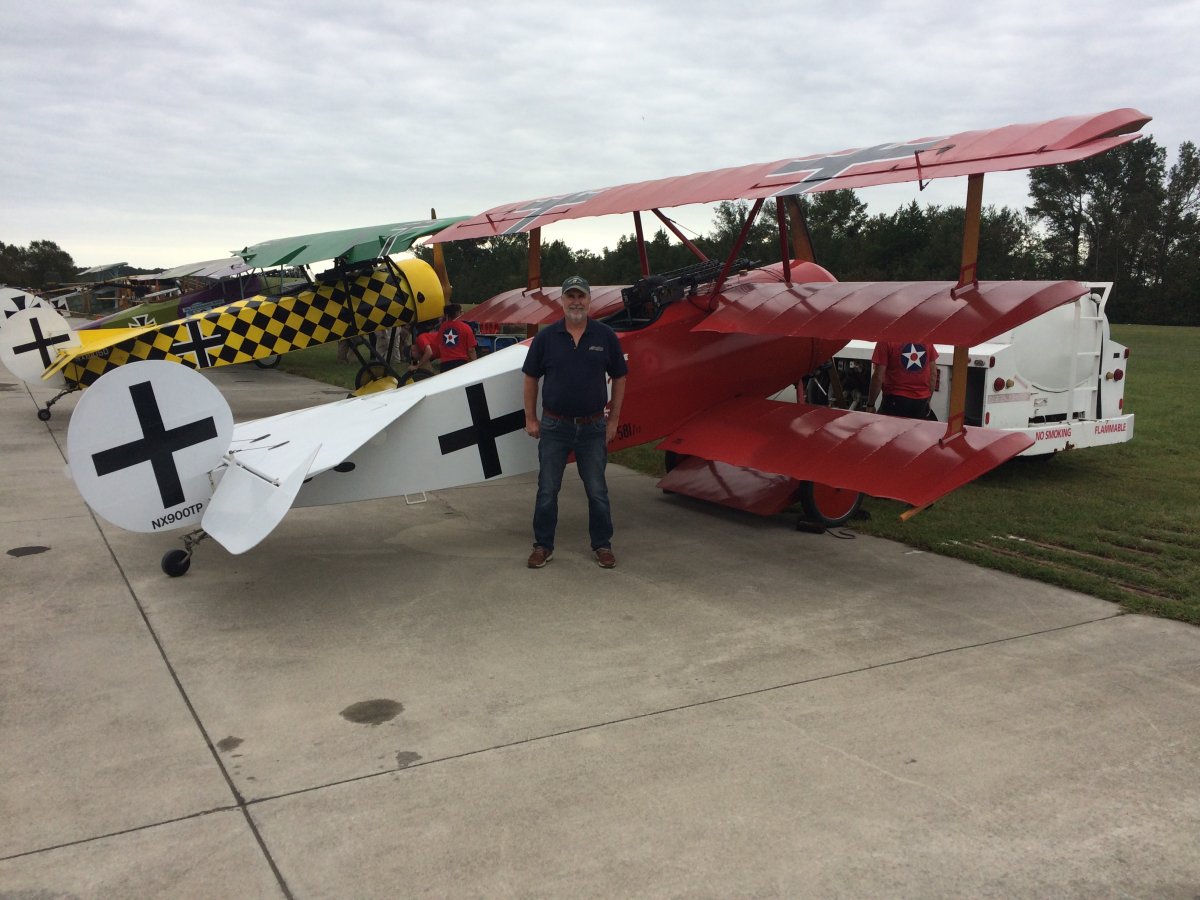 |
|
| Here is a better shot of the Triplane. |
| |
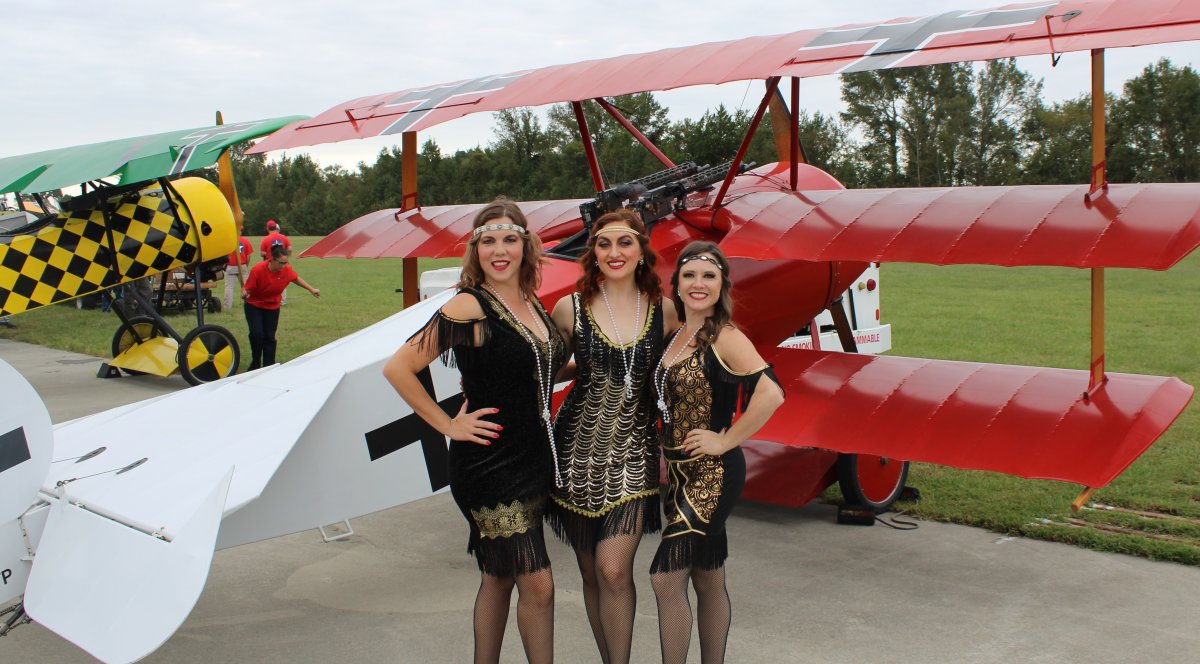 |
|
| Guns, guns, guns! |
| |
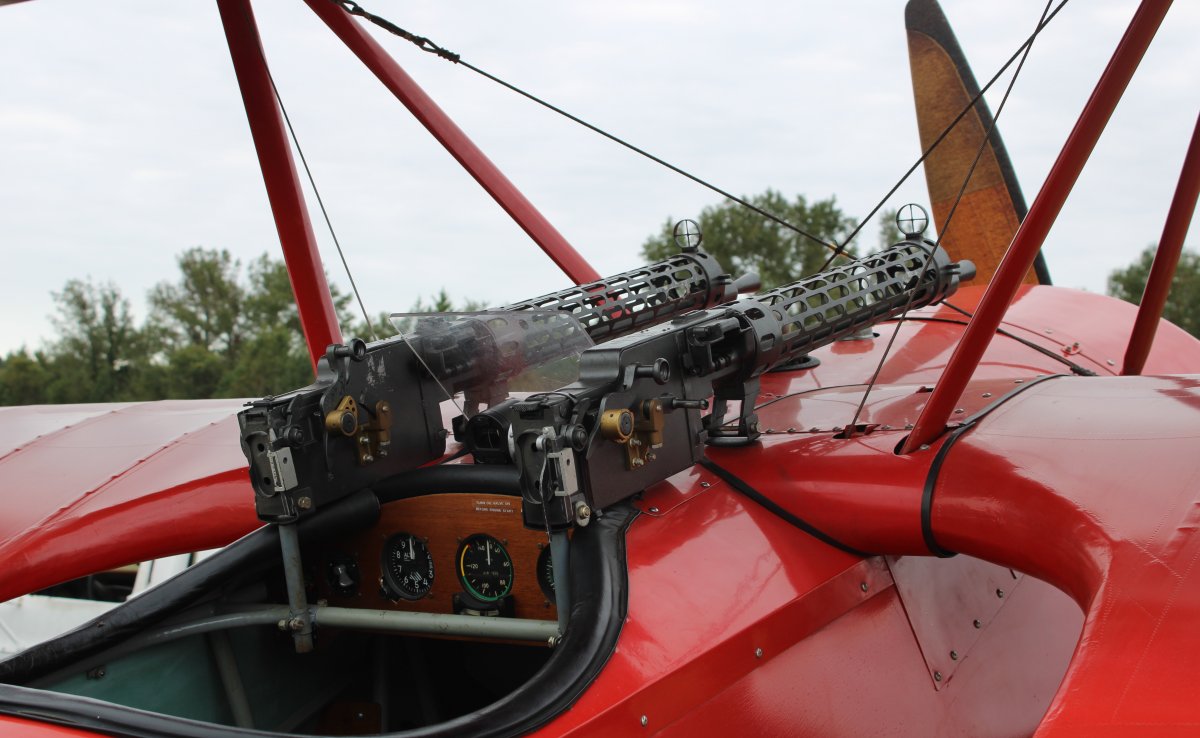 |
|
| A second Triplane. I like the paint scheme on this one better. I'm tired of all red Triplanes. |
| |
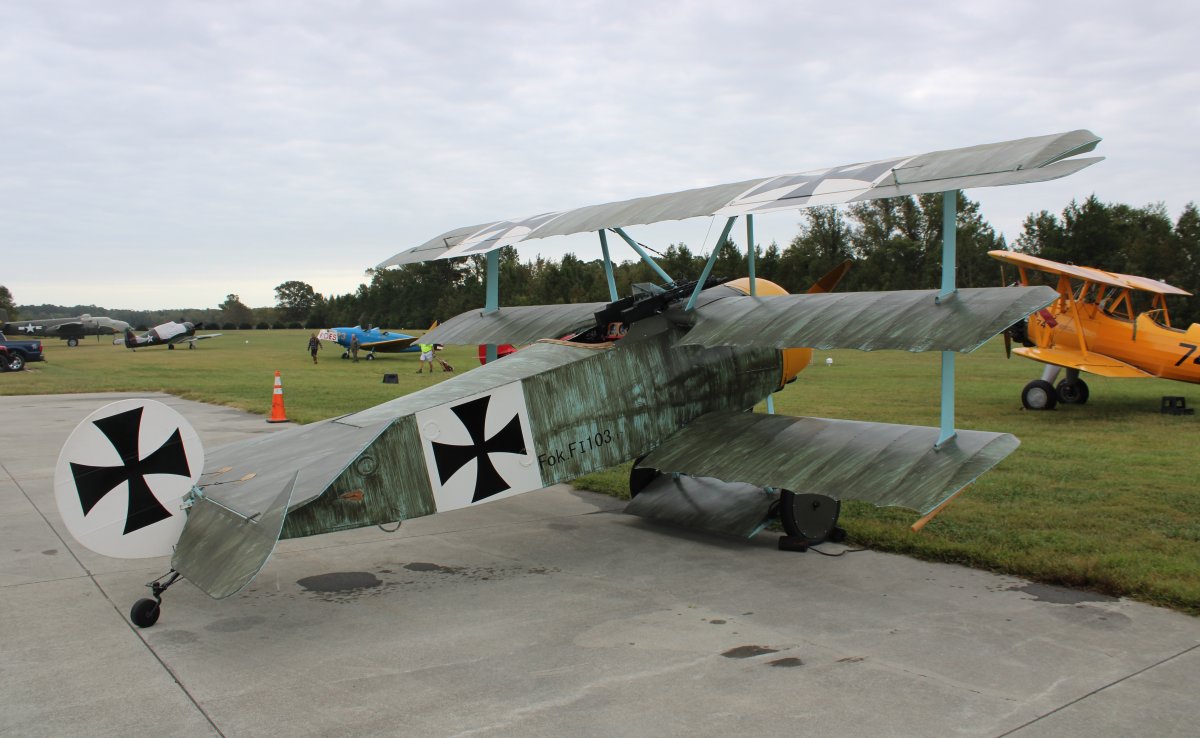 |
|
|
|
| |
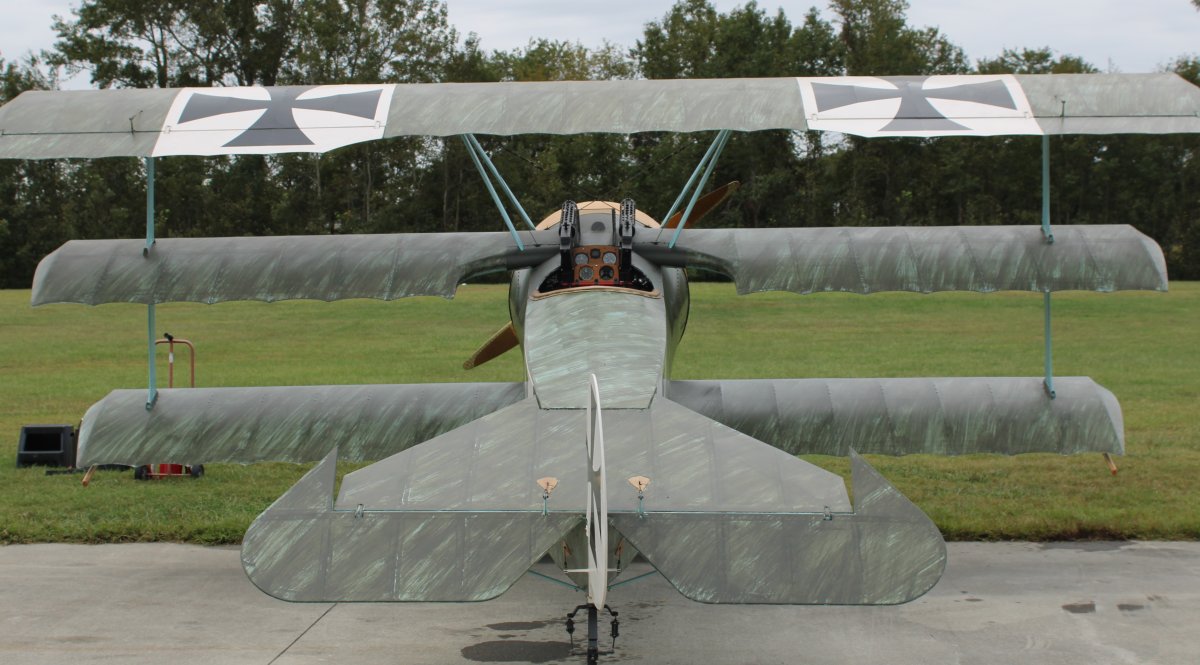 |
|
| But I like this one with the white tail. |
| |
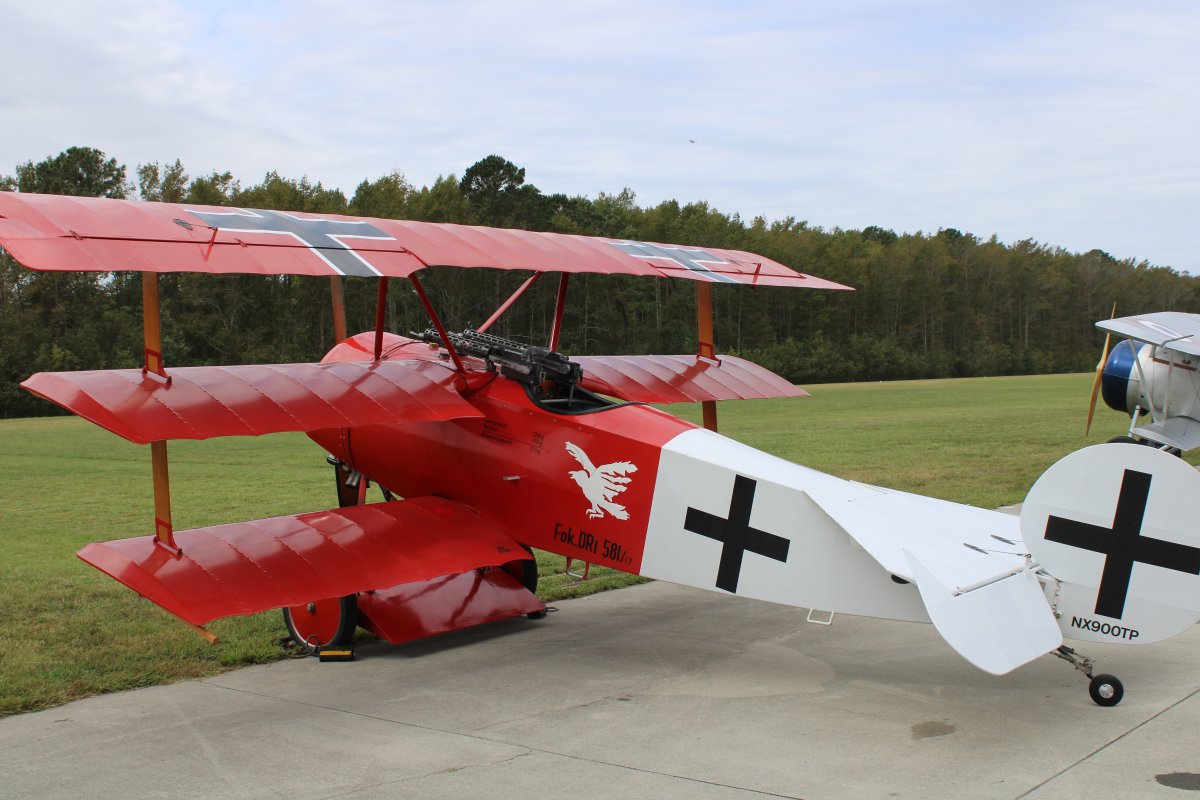 |
|
|
A beautiful two-seat Bleriot XI that looks like it's brand new. The single-seat version was used by Frenchman Louis Blériot to make the first flight across the English Channel in a heavier-than-air aircraft, on 25 July 1909, one of the most famous flights in aviation history.
|
| |
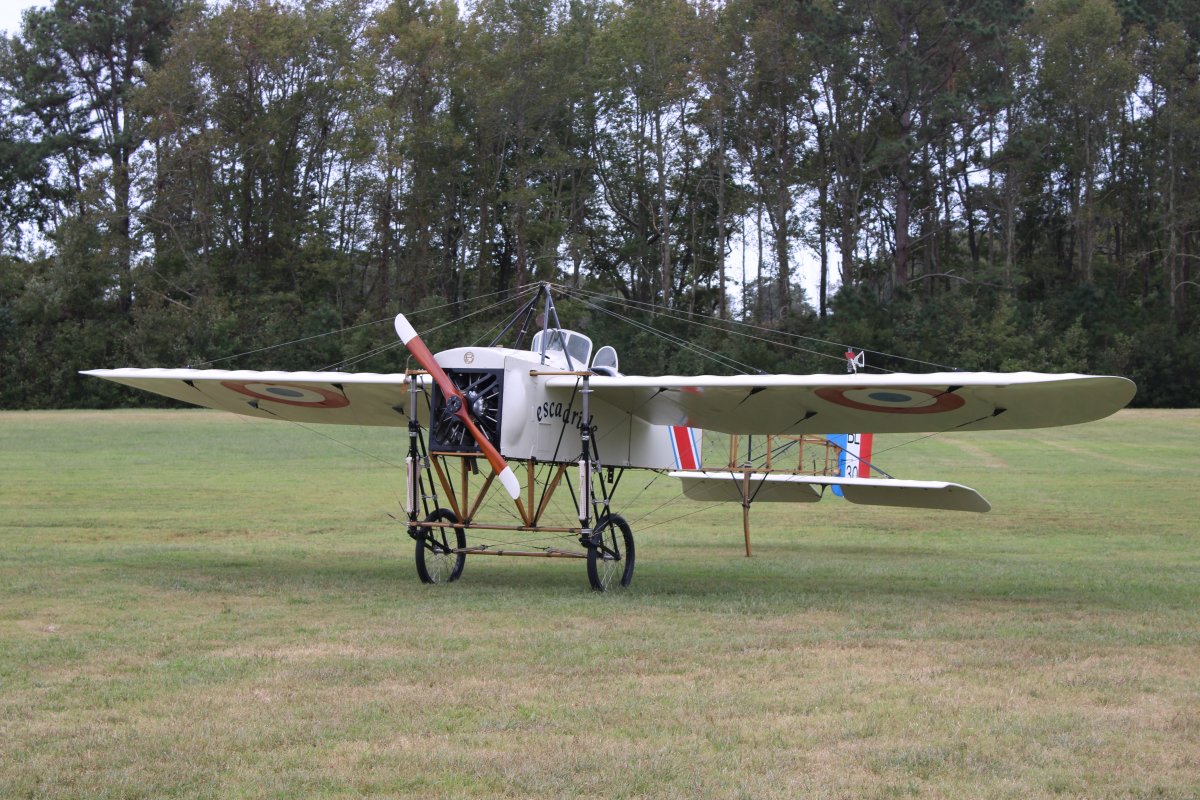 |
|
| Check out that tailskid! Also, notice, no ailerons. Wing-warping -- that's how roll was controlled. |
| |
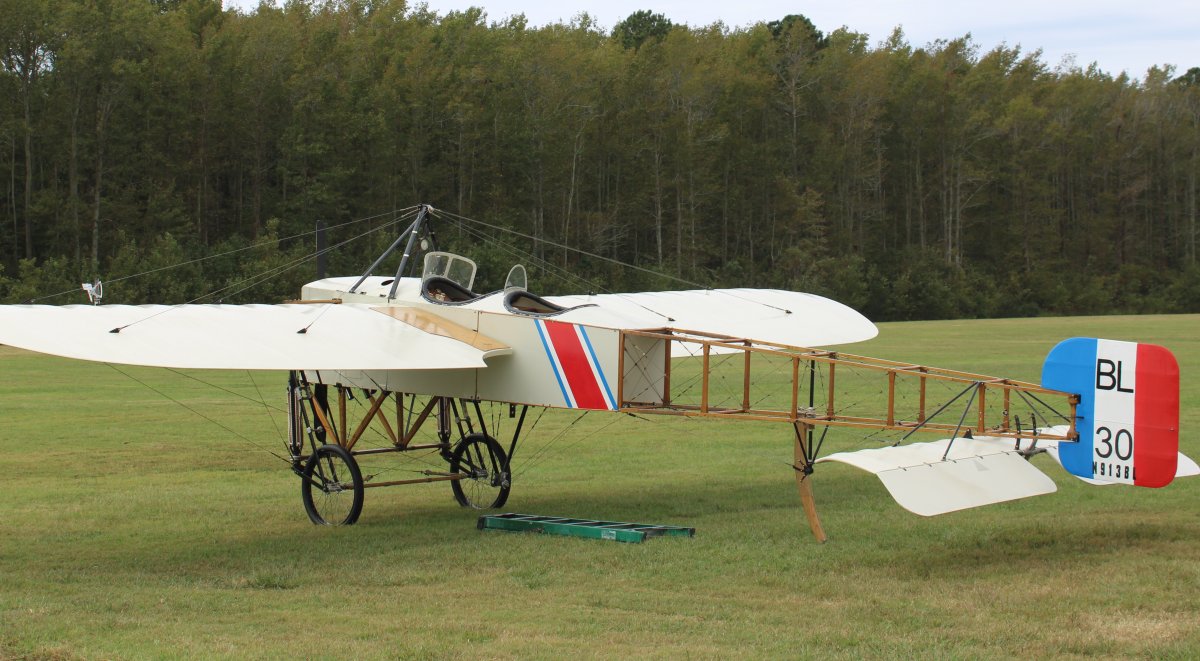 |
|
| I bet no Bleriot looked this good back in the day. |
| |
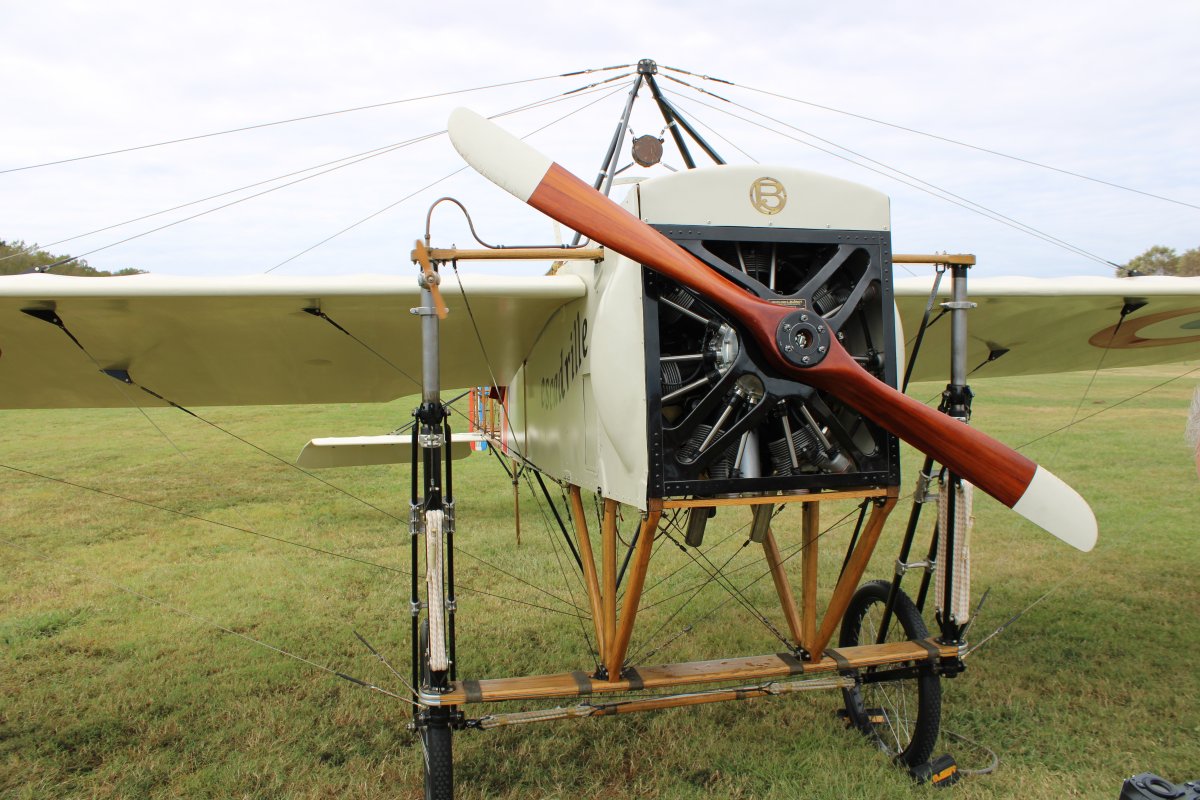 |
|
|
Jim in front of a Sopwith Triplane. The British Sopwith Triplane actually preceeded the German Fokker Triplane. The Germans saw the Sopwith Triplane flying around and so, of course, THEY had to have one. The Fokker Triplane was a superior fighter to the Sopwith.
|
| |
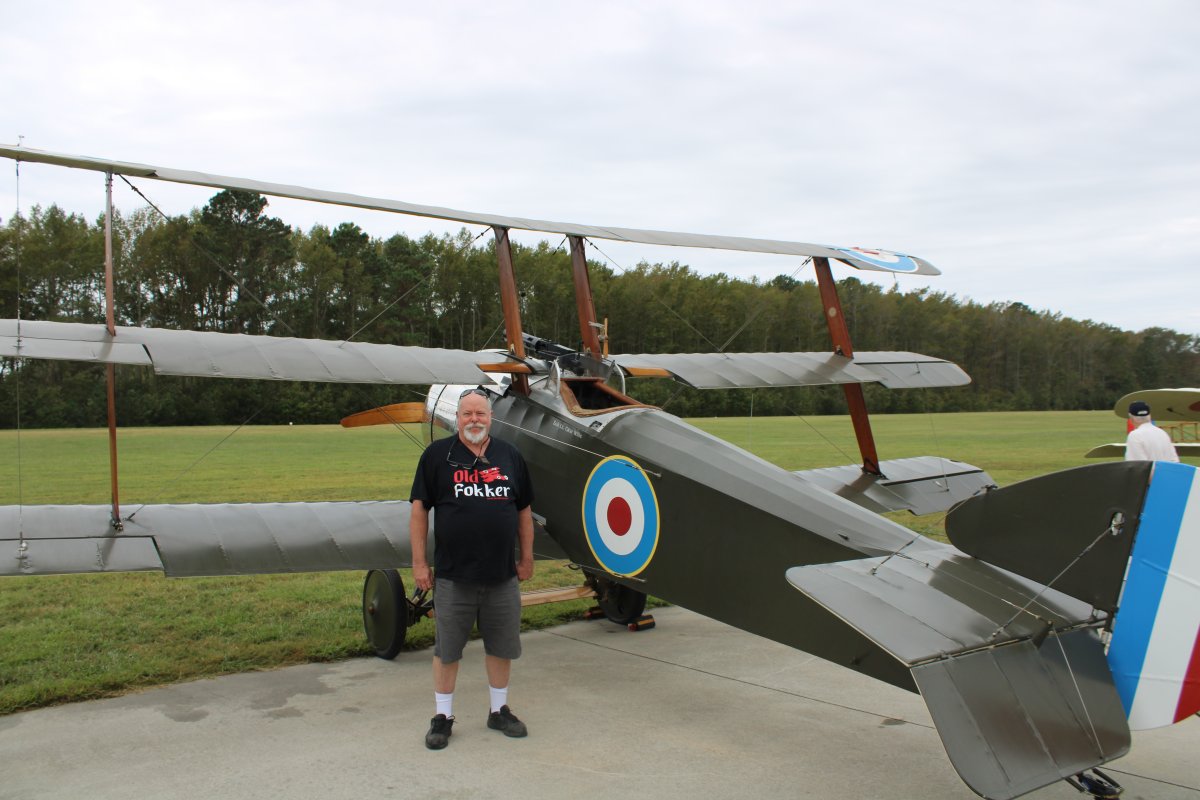 |
|
| Look how thin the wings are compared to the Fokker. |
| |
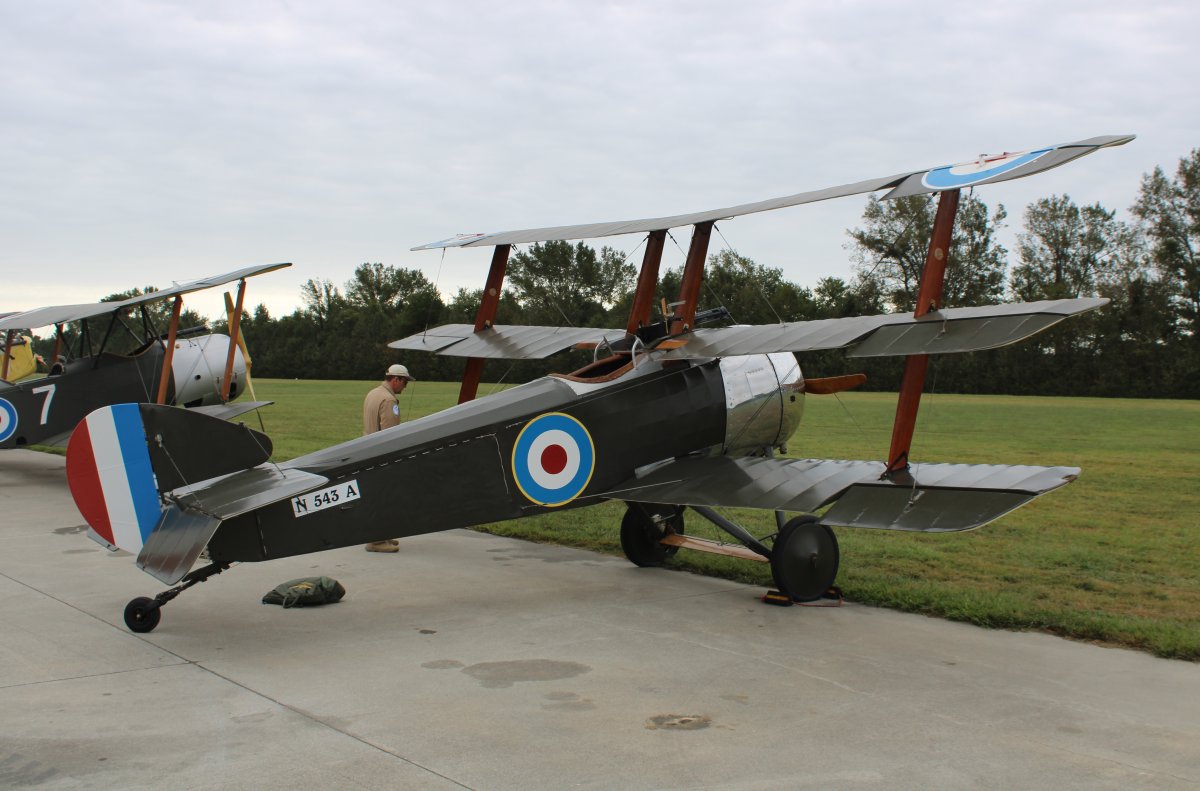 |
|
|
|
| |
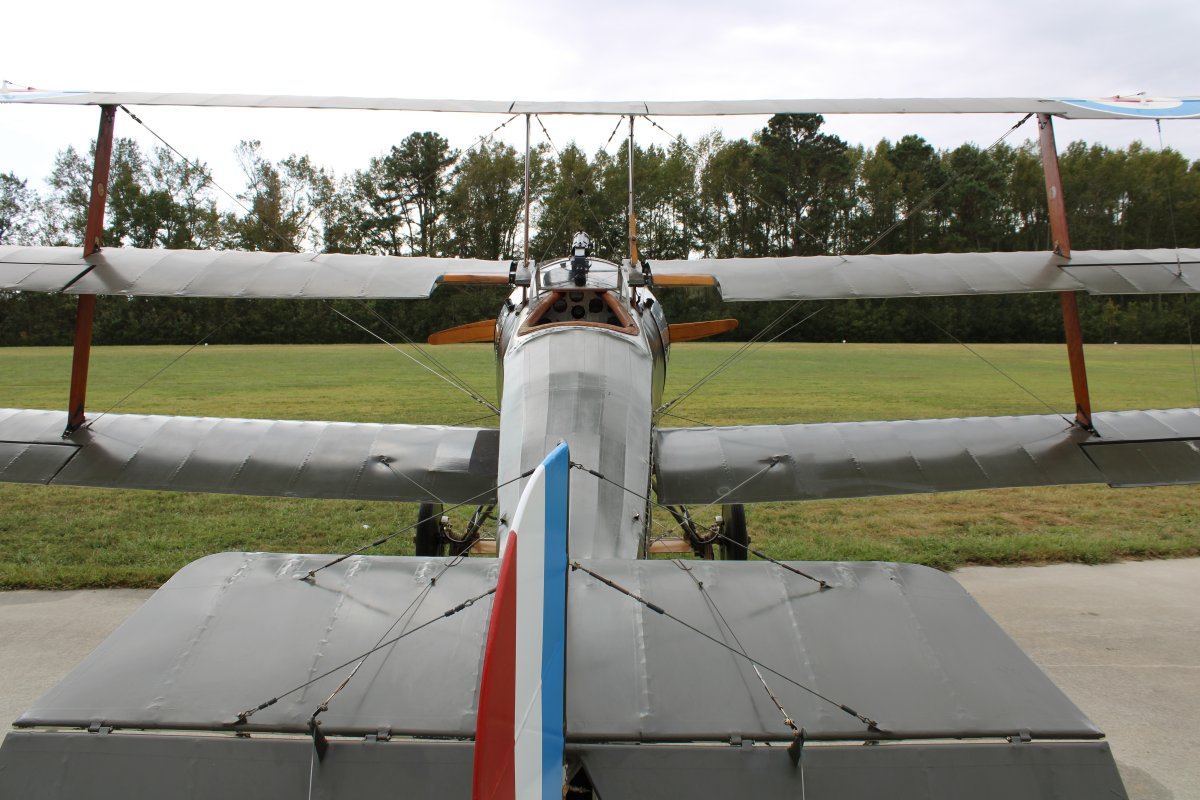 |
|
The World War One birds lined up. That's a French Nieuport 17 in the foreground. It was introduced in March 1916. It used the Le Rhone rotary engine -- the same as the Fokker DR-1 Triplane. It was so successful at first that the British, Italians and Russians also used it. But by mid-1917 newer fighter designs had surpassed it and it transitioned to use as an advanced trainer. |
| |
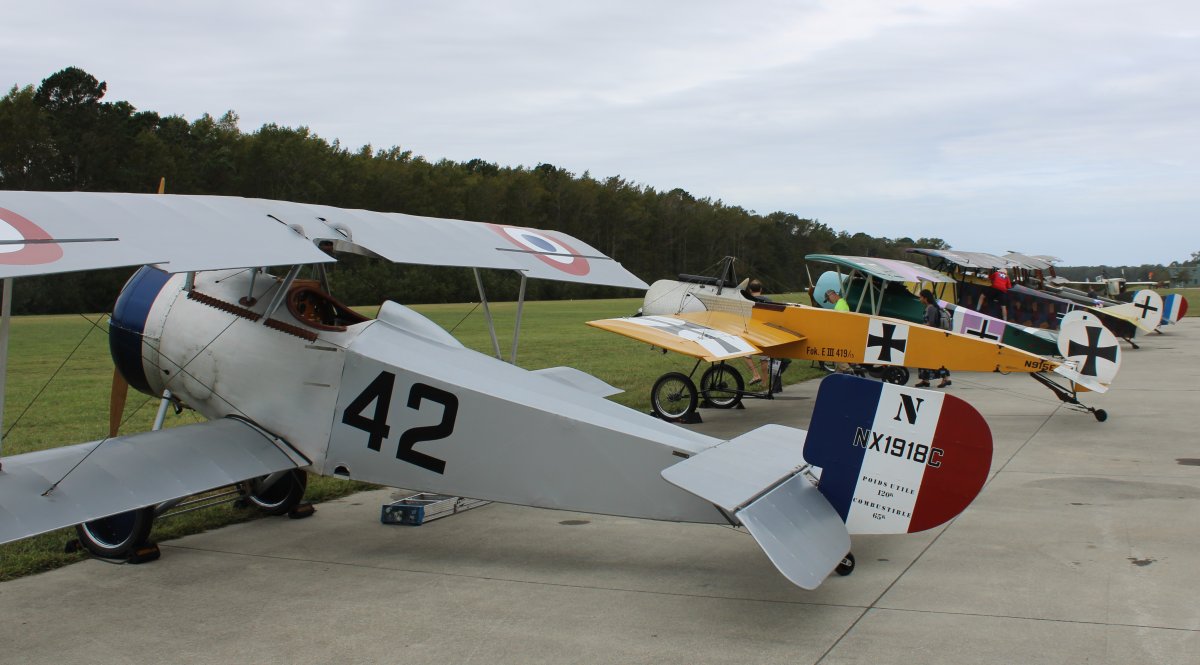 |
|
The Fokker Eindecker (EIII).
The Eindecker was the first service aircraft to be fitted with a machine gun synchronised to fire through the arc of the propeller without striking the blades. The tactical advantage of aiming the gun by aiming the aircraft and the surprise of its introduction led to what was known as "The Fokker Scourge" which occurred from August 1915 to early 1916, when the Imperial German Flying Corps ruled the skies over Belgium and France. It's a big advantage when you're the only one with a gun in a gunfight.
|
| |
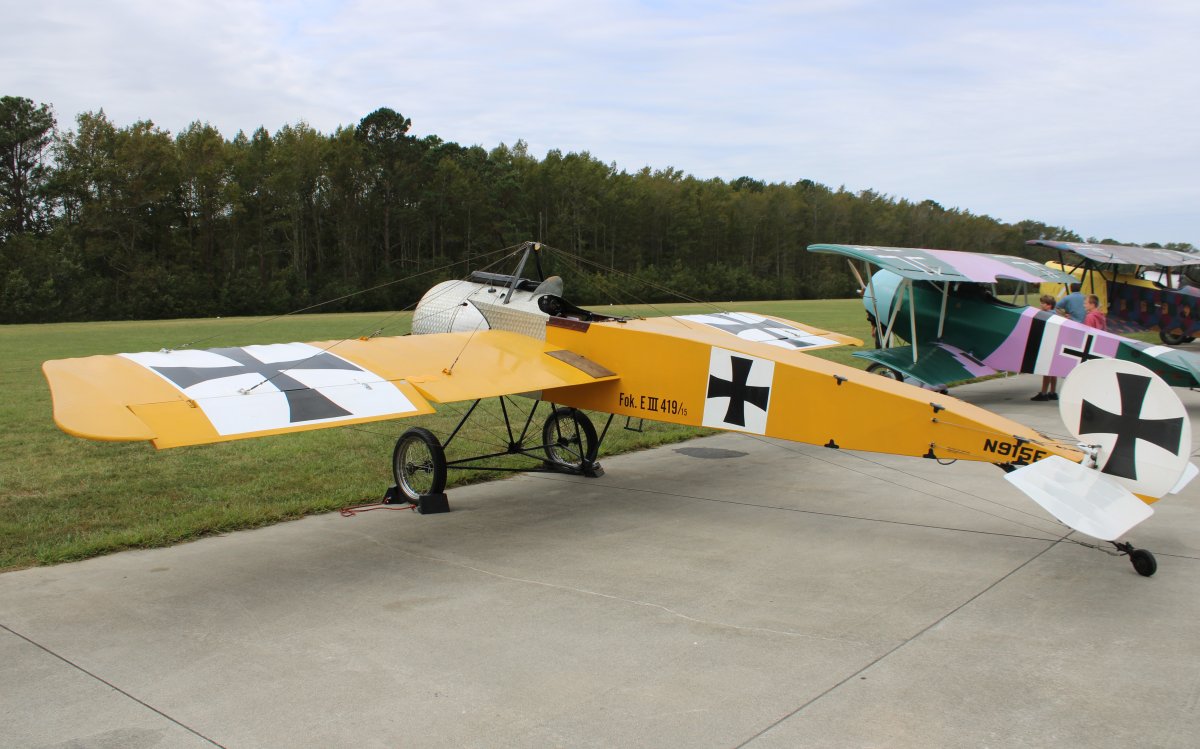 |
|
| A Thomas Morse. The Thomas-Morse S-4 Scout was an American biplane advanced trainer, operated by the United States Army and the United States Navy. Dubbed the "Tommy" by pilots who flew it, the aircraft became the favorite single-seat training airplane produced in the U.S. during World War I. It had a long and varied career beginning with the S-4B, which first appeared in the summer of 1917. |
| |
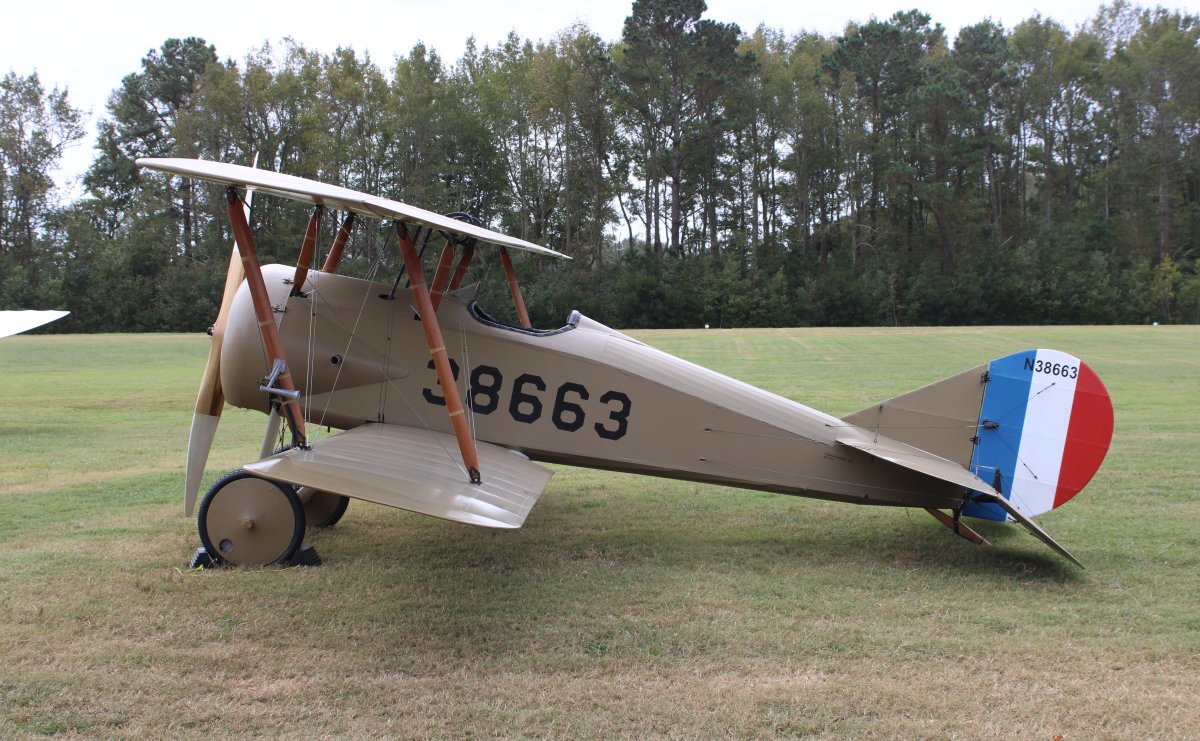 |
|
|
Another look at the Fokker D-7.
|
| |
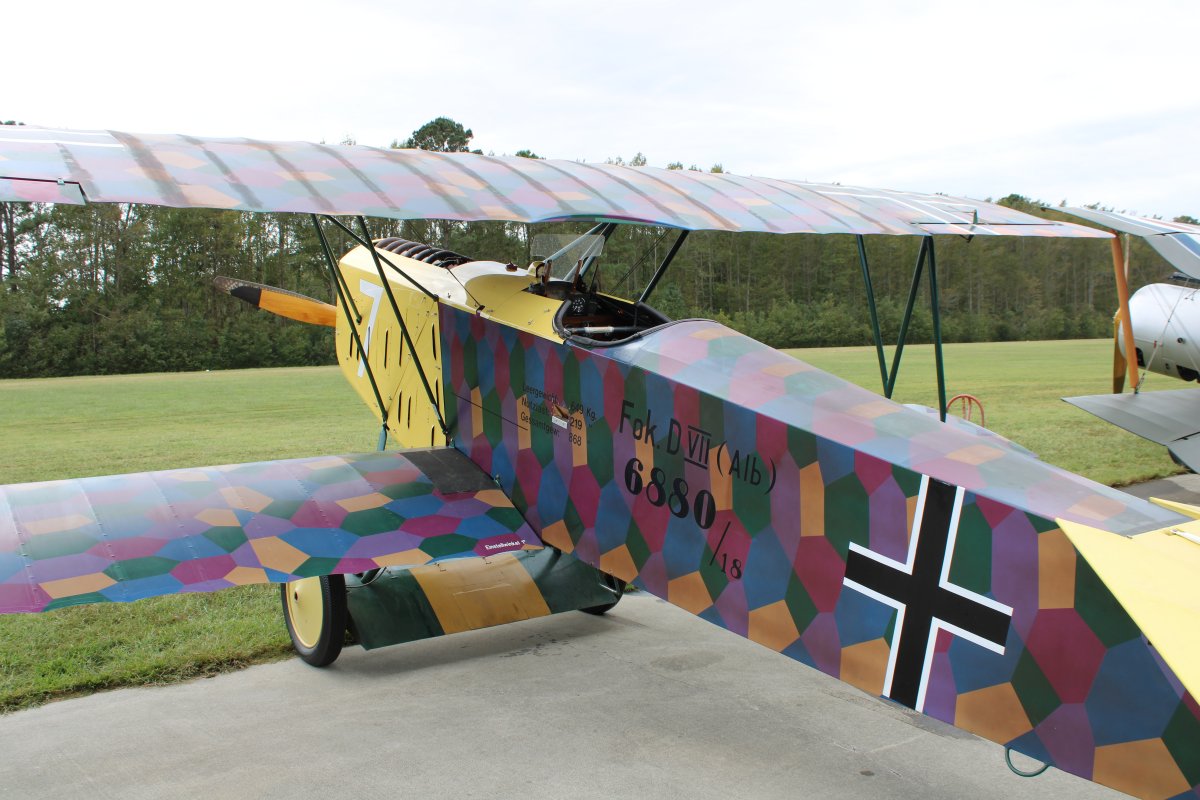 |
|
|
The Sopwith 1 ½ Strutter, first flown in 1915, was a WWI multi-role biplane with either one or two seats. This is a two-seater as you can see. It was the first British fighter to enter service with a synchronized machine gun, and its forward-firing Vickers and movable Lewis gun in the rear packed a considerable wallop. The Strutter was the first Sopwith to make a resounding name for itself. First flown in 1915 and introduced in 1916, Sopwith could not build enough of them and production was contracted from two other firms. The Strutter served with the Royal Flying Corps, the Royal Navy, the French, the Americans and others in fighter, bomber, and observation roles. The RNAS called it the “Ships’ Strutter” in service from naval vessels.
It was called 1 1/2 because it had full struts near the wingtips but only half struts at the fuselage.
|
| |
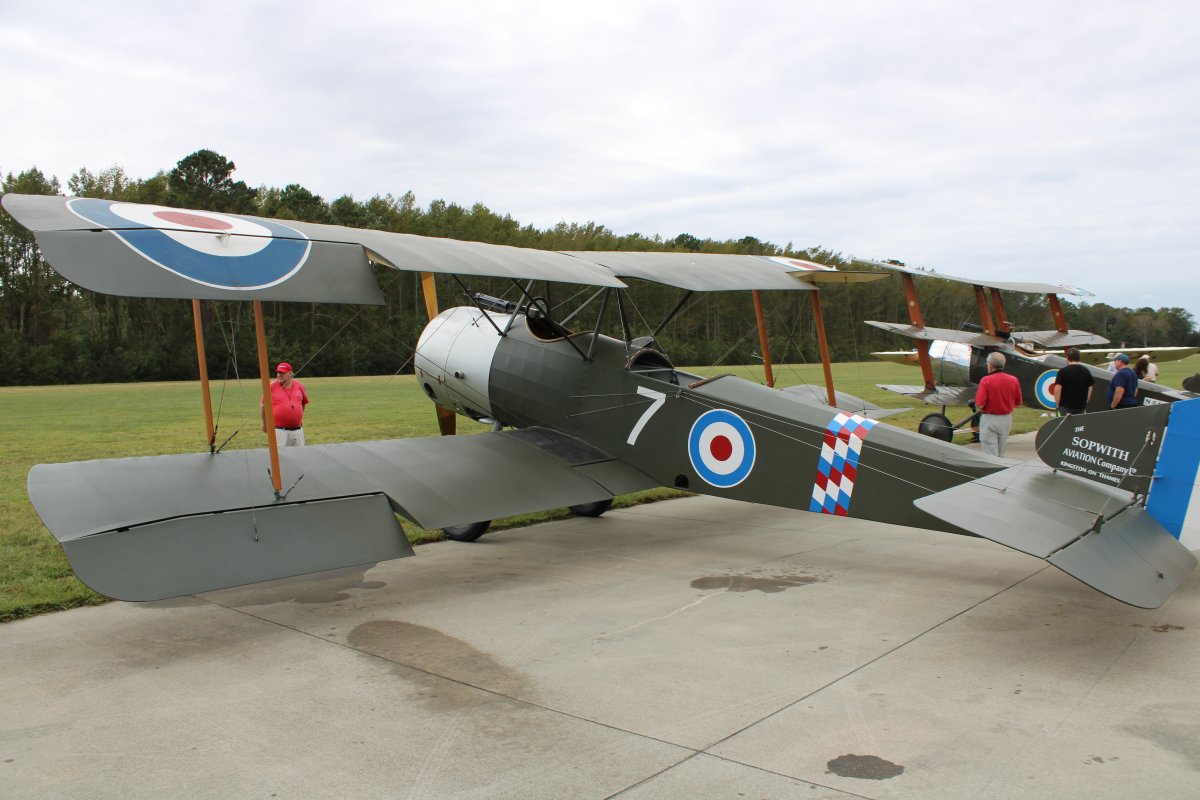 |
|
| This was neat. A Le Rhone rotary engine mounted on a test stand, just itching to be started. |
| |
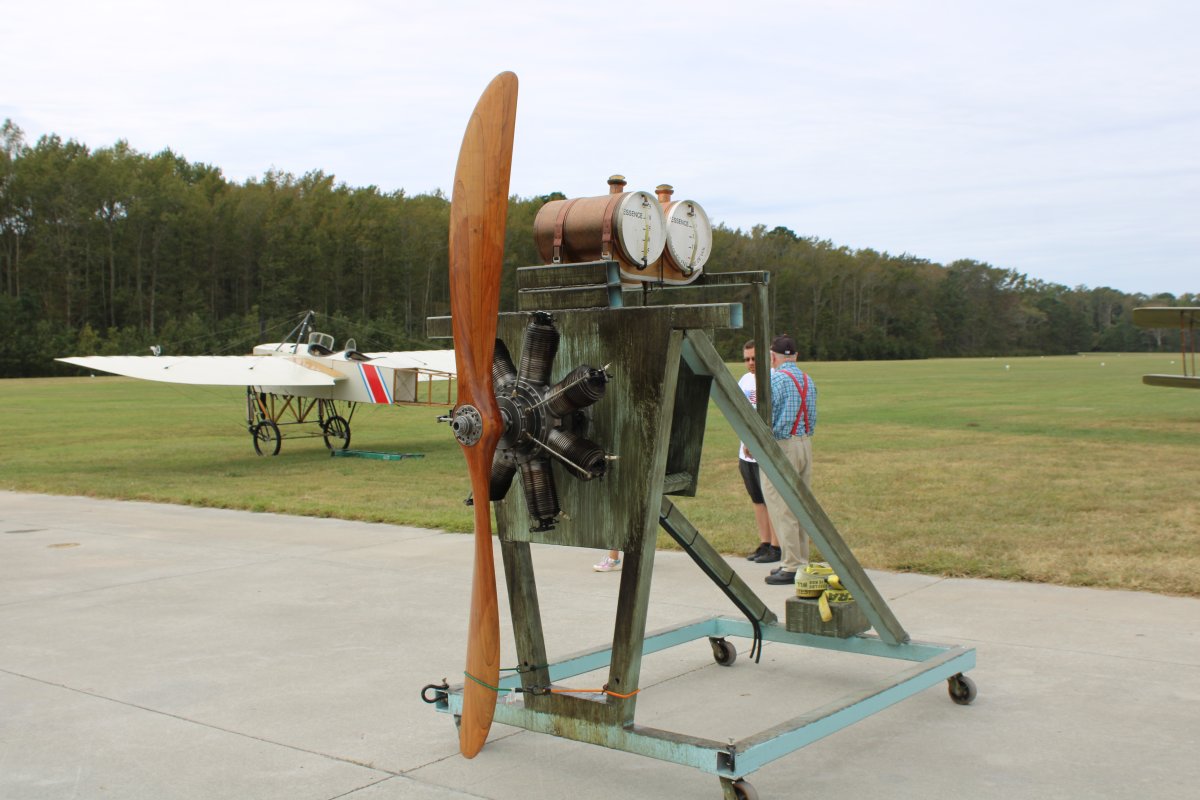 |
|
| And they did try and start it. |
| |
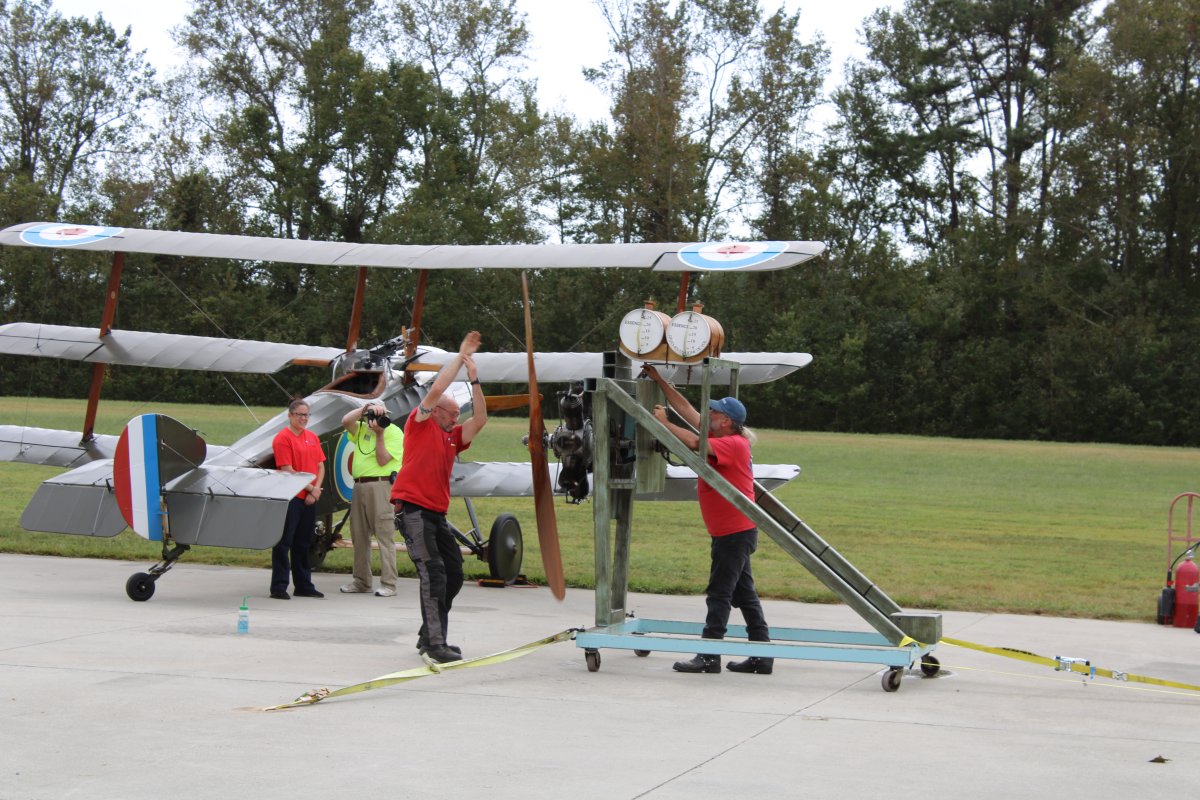 |
|
|
But the engine refused to start despite heroic efforts by the exhausted guy sitting on the stand.
I told Jim, "You want to know why I'm putting a Lycoming O-320 in my Triplane instead of a rotary? This is the reason!" Well, at least one reason. The other being that it sprays castor oil all over the airplane every time the engine runs.
|
| |
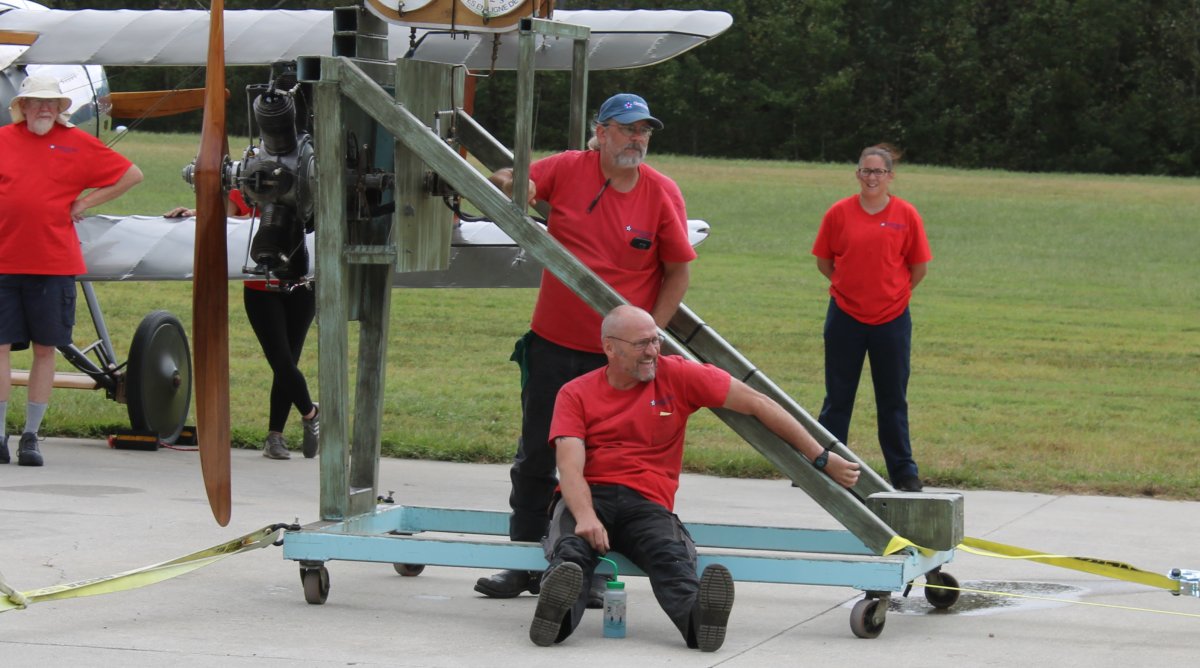 |
|
|
Some World War One-era reenactors were on hand.
|
| |
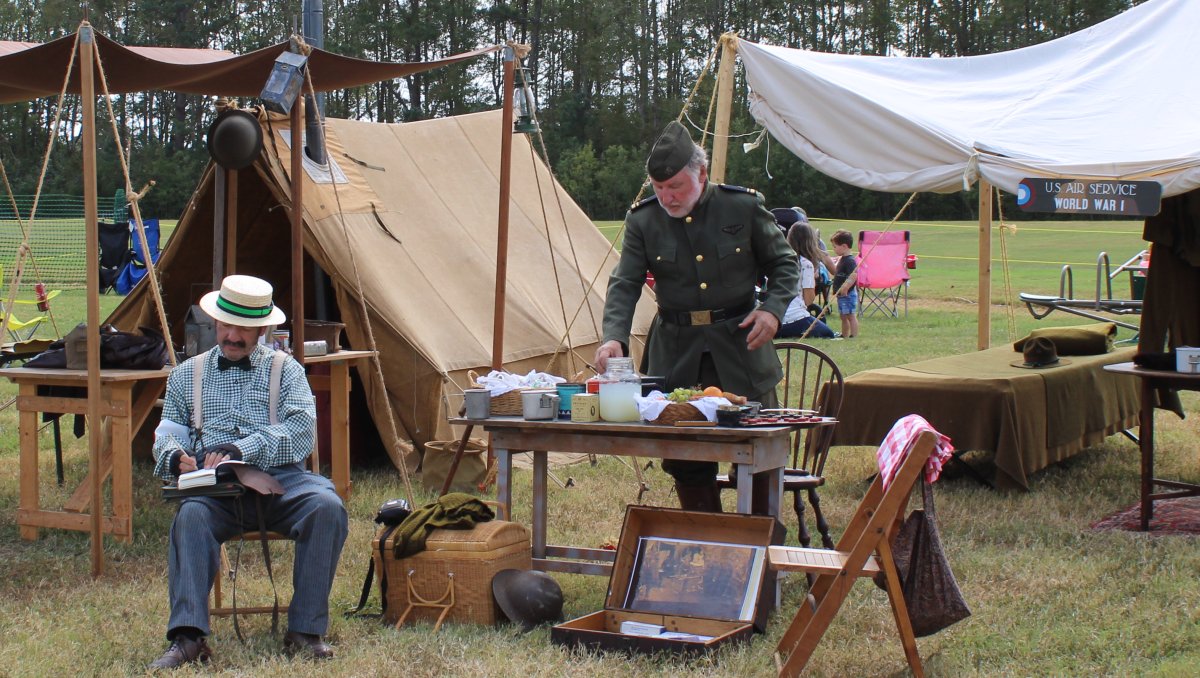 |
|
|
|
| |
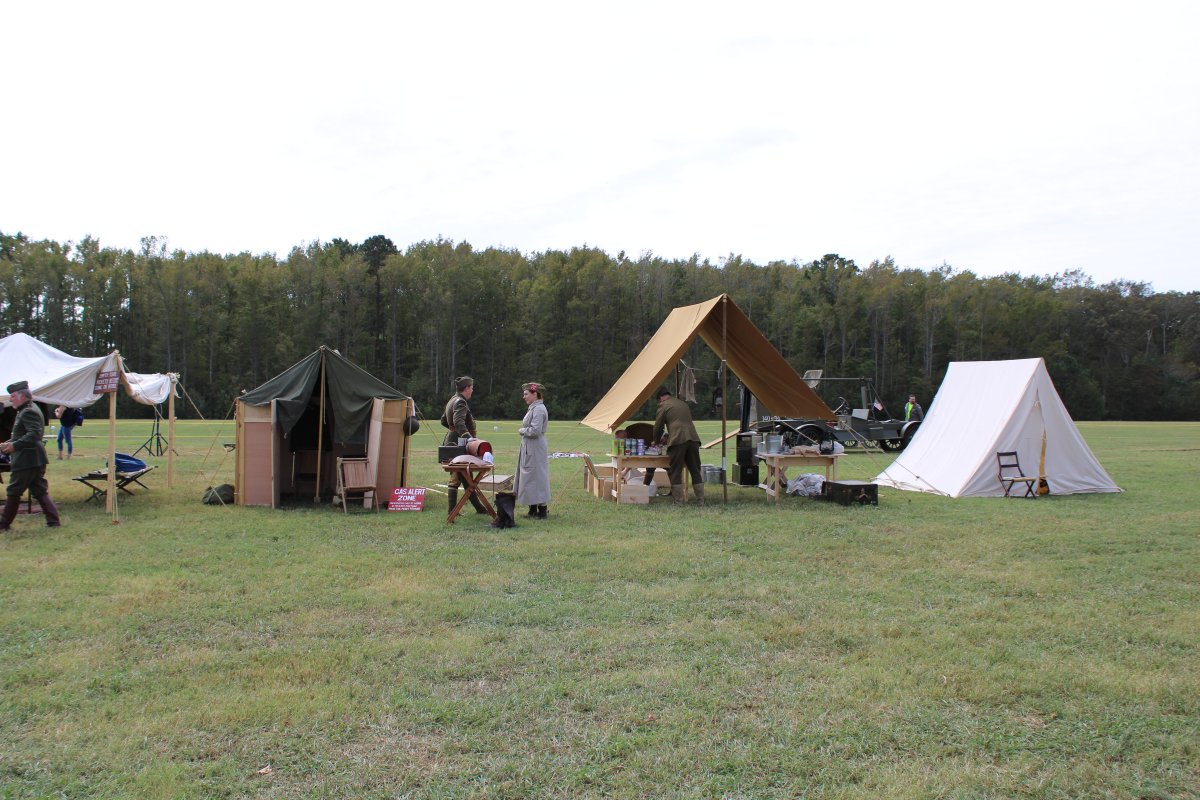 |
|
| Food trucks were on hand and like most food trucks I have encountered, they had some pretty tasty stuff. I had a "Pittsburgh" sandwich -- I can't remember the exact name -- but it was remarkable in that there were fries in the sandwich! It was pretty good, actually. |
| |
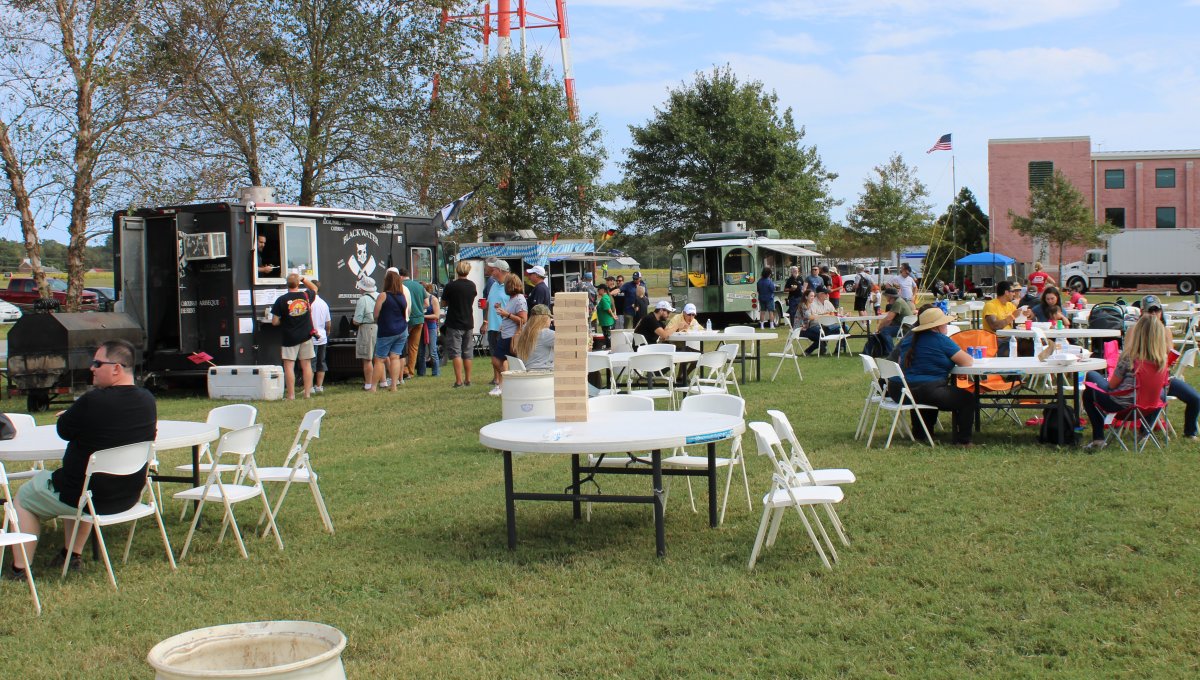 |
|
|
One of the big hangars had entertainment. Not only talented singers, but beer tasting! For obvious reasons, I could not partake in the beer tasting.
|
| |
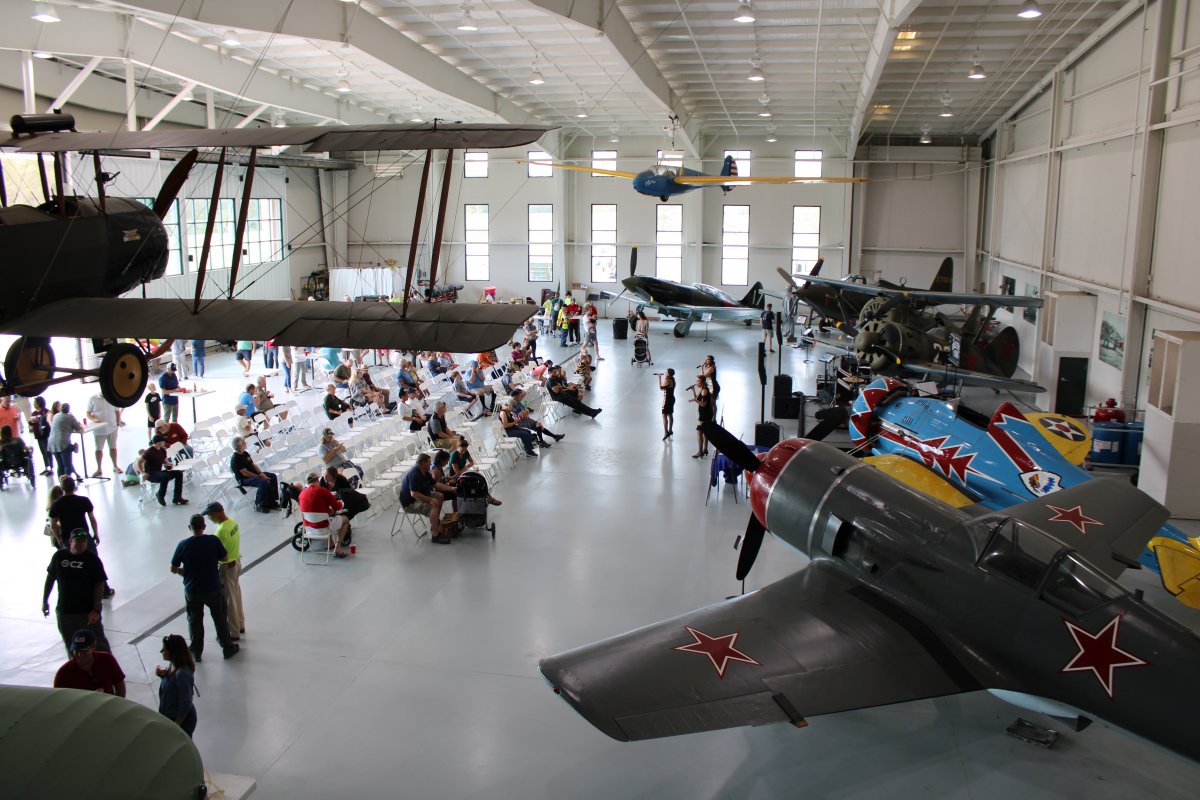 |
|
| The singers in WWI-era dress. |
| |
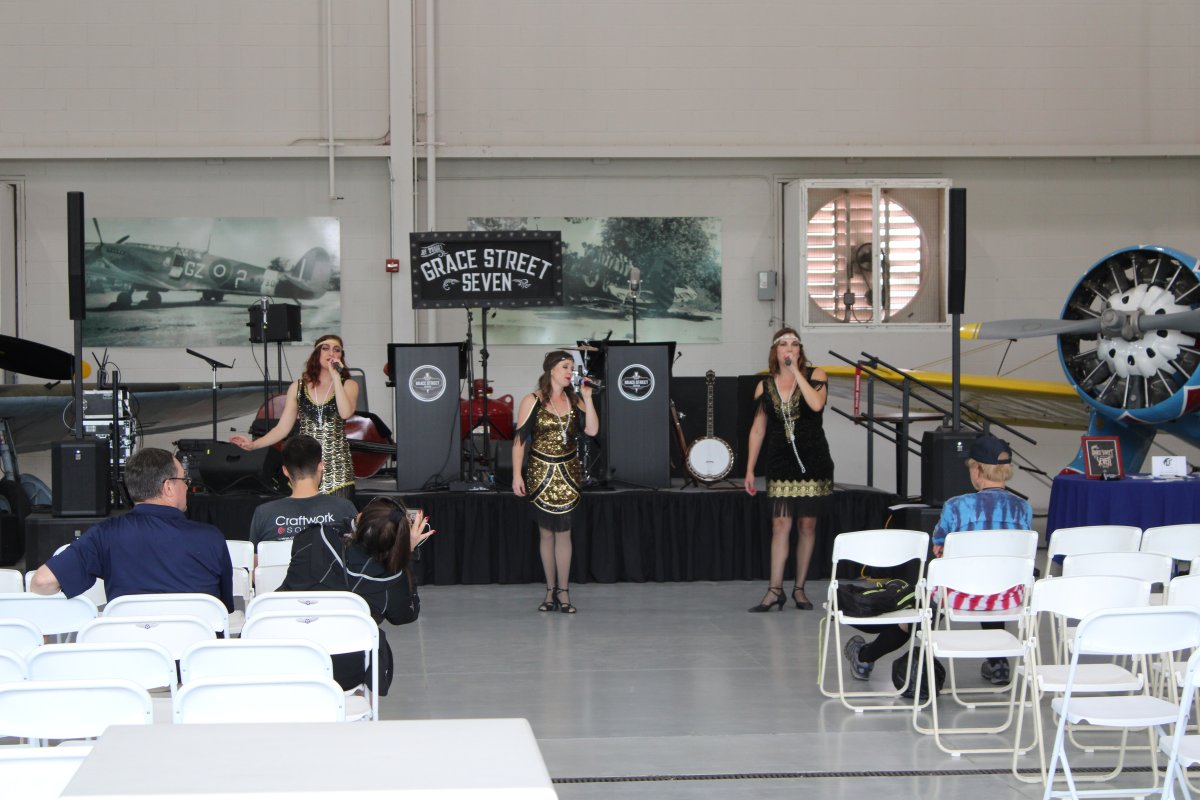 |
|
| An inverted Sopwith Pup hangs in the museum section. |
| |
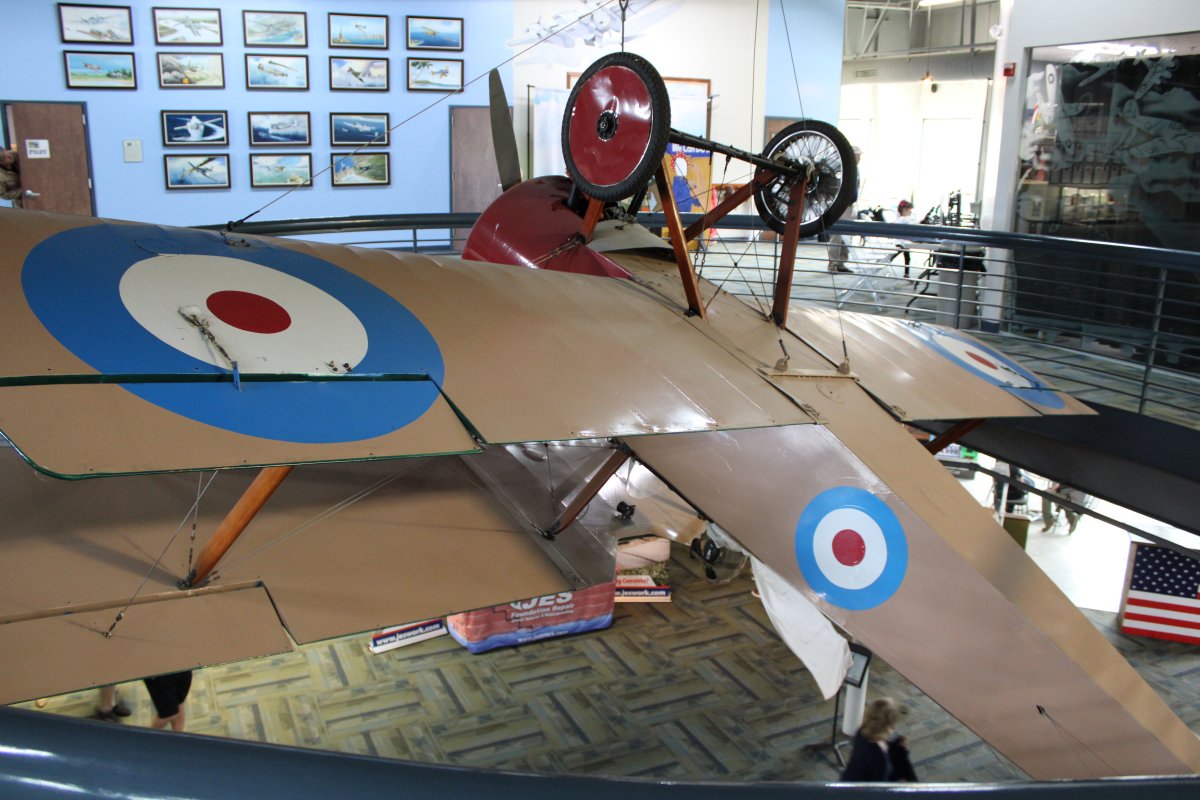 |
|
|
Looking out of the museum upper floor at the flight line.
|
| |
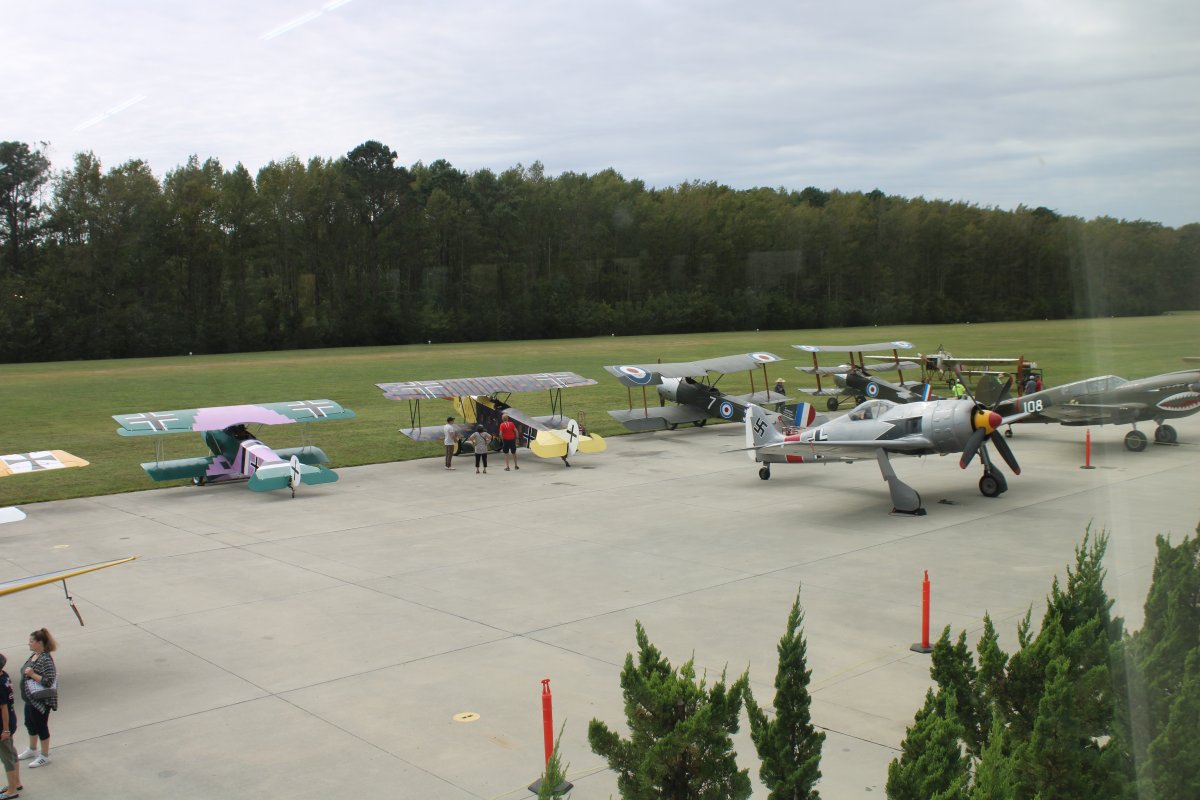 |
|
| Looking down at a Spitfire, Nieuport 17 and Eindecker. |
| |
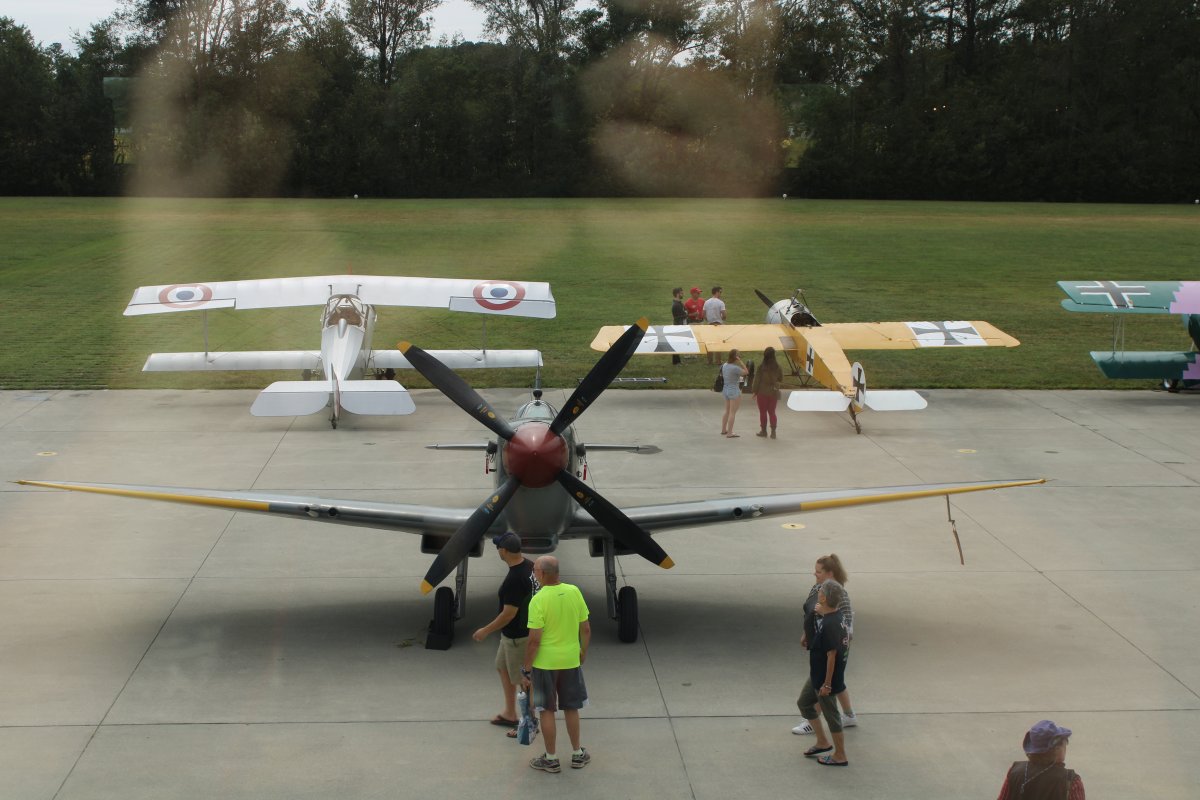 |
|
| Where else can you a mixture of planes like a Skyraider, T-6, Wildcat, Triplane, D-8, Halberstadt CL.IV and Curtiss Pusher parked together? |
| |
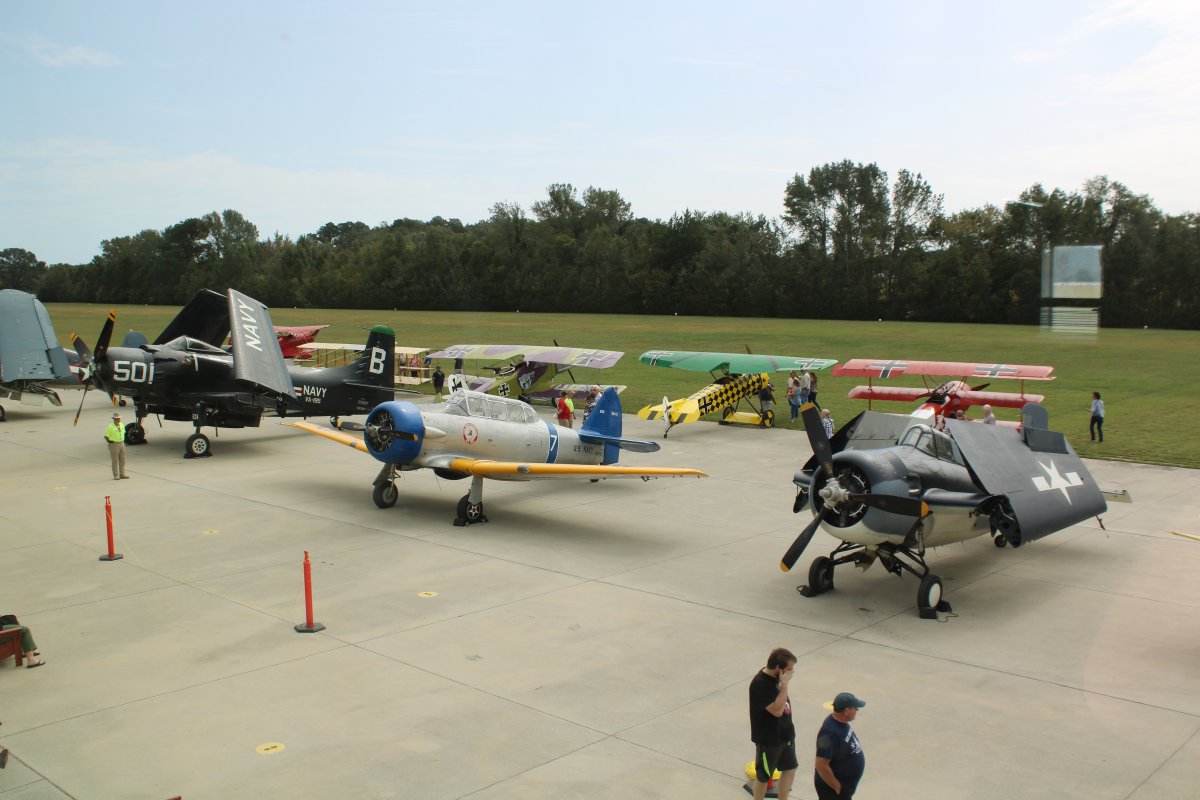 |
|
| We checked out the WWI Hangar. Of course, most of the planes were on the flight line, but this all red Triplane and single-place Bleriot XI were still in the house. This Bleriot looks more like the one he flew across the English Channel. |
| |
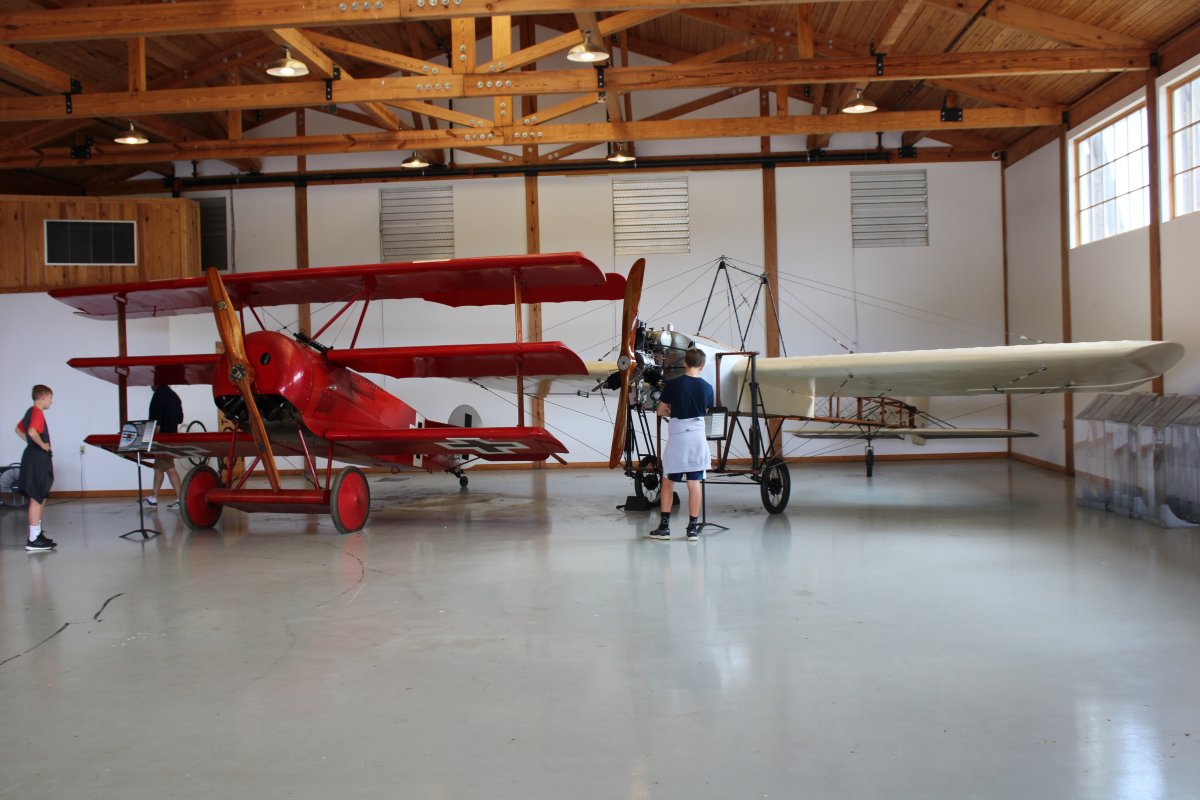 |
|
|
Another Fokker D-7.
|
| |
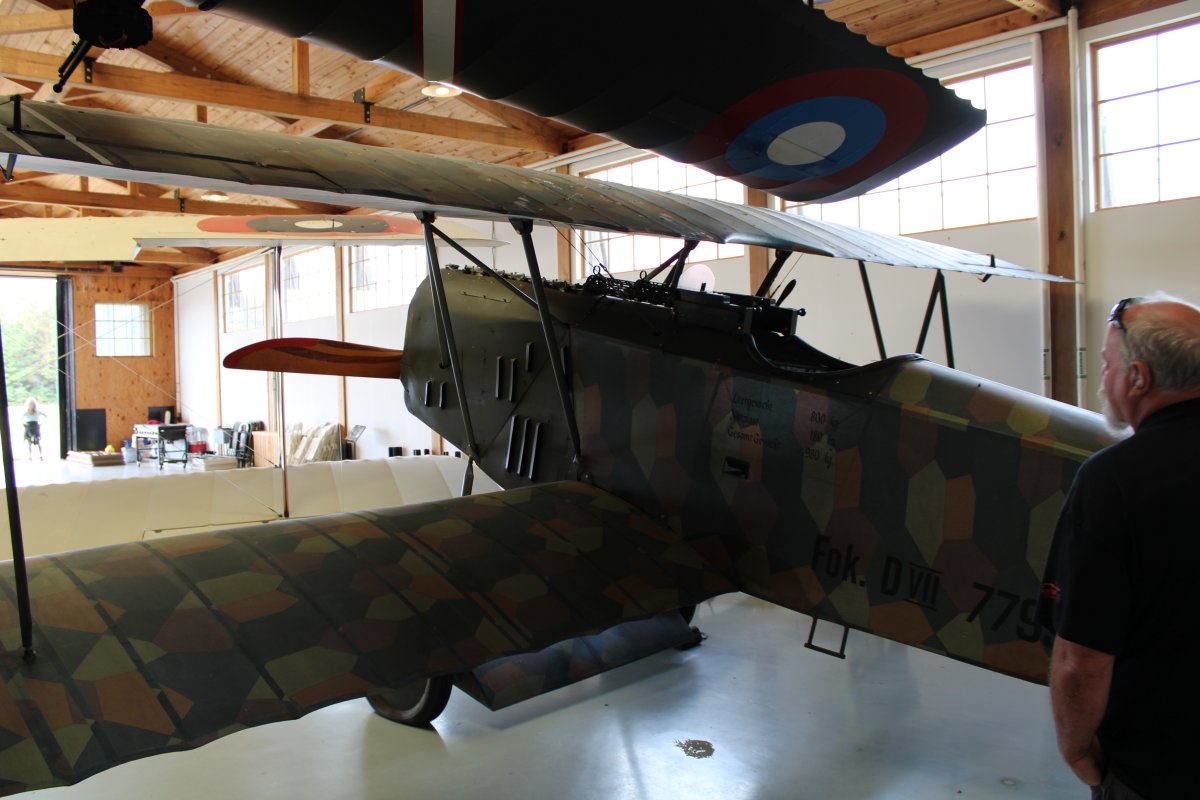 |
|
| And a third D-7! |
| |
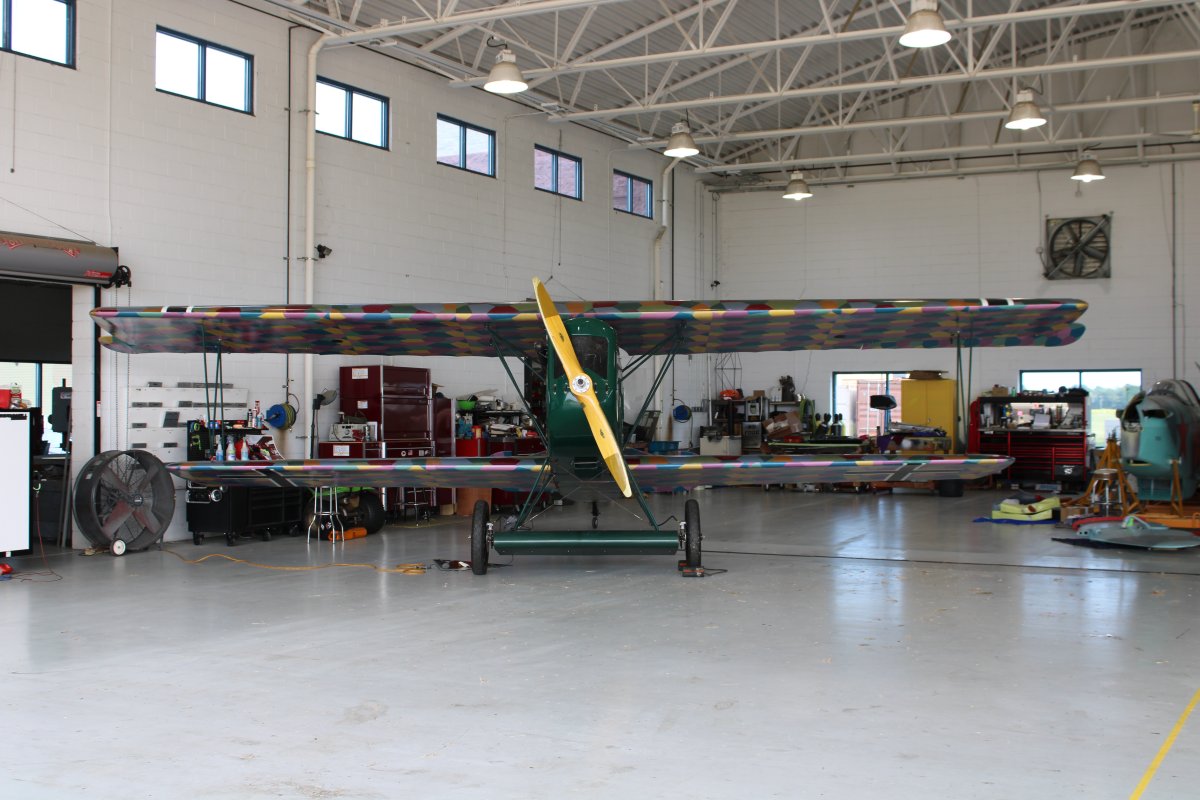 |
|
|
Then it was time for the airshow. I had brought two folding chairs. Good move on my part.
Notice how the weather has cleared up. I actually ended up getting sunburned today.
|
| |
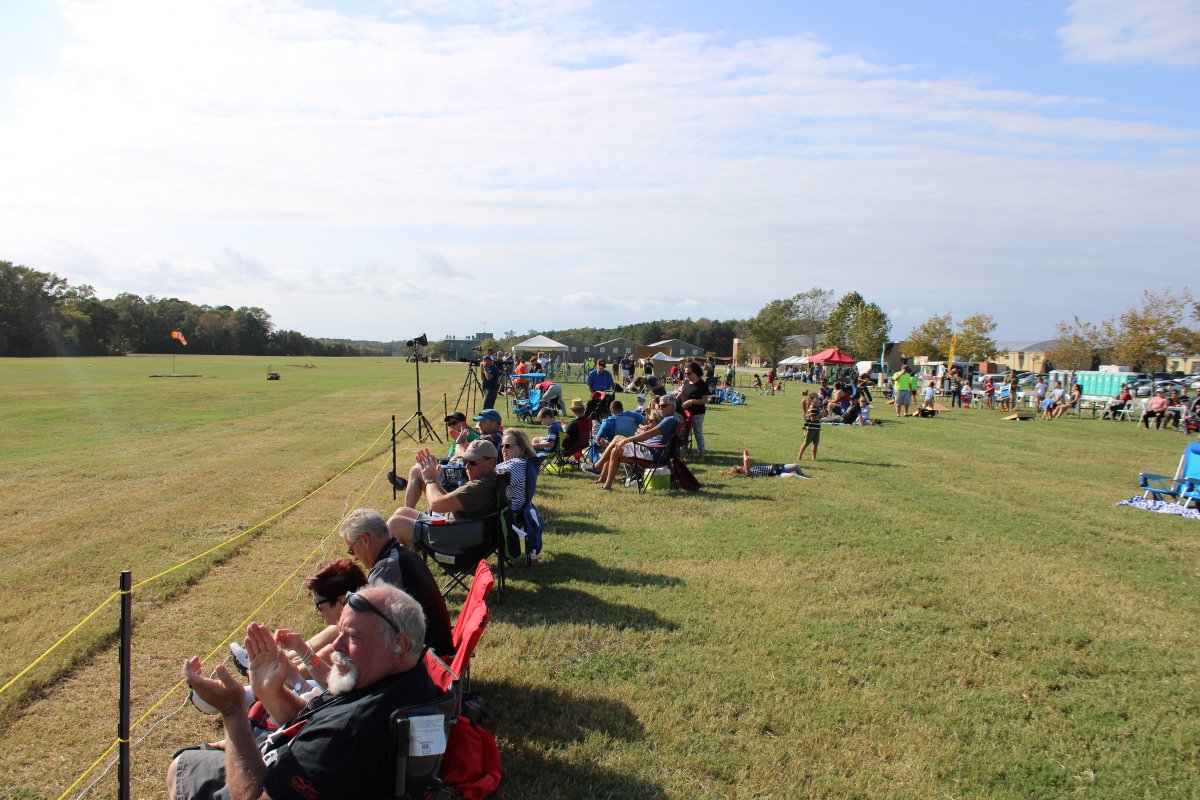 |
|
The first airshow plane to fly was the 1911 Curtiss Model D “Curtiss Pusher” replica. Retired Navy pilot Bob Coolbaugh built this replica to honor the 100th anniversary of Naval Aviation. Back in 2011 he and Andrew King flew it around the country to let people see it. I saw it that year fly at Massey and at AirVenture. Link
To me, on the multiple occassions I've seen it fly, it looks like a handful. It's way under-powered and way sluggish on the controls. The pilots are clearly very careful, making no turns more than 15-30 degrees bank. This plane could stall and spin on you in a heartbeat. There was a little wind today and I could see the pilot working hard. I give them credit for flying it.
It was also the aircraft type which made the first takeoff from the deck of a ship (flown by Eugene B. Ely off the deck of the USS Birmingham on November 14, 1910, near Hampton Roads, Virginia) and made the first landing aboard a ship (the USS Pennsylvania) on January 18, 1911, near San Francisco, California.
|
| |
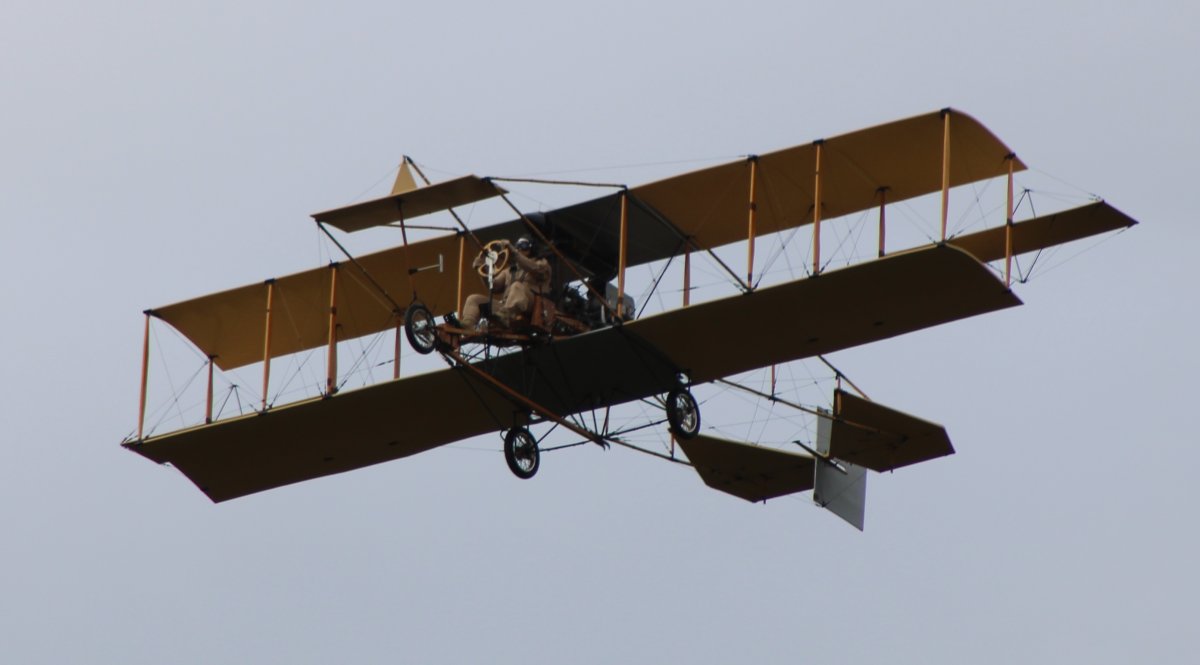 |
|
|
One of the Triplanes taxiis for takeoff.
|
| |
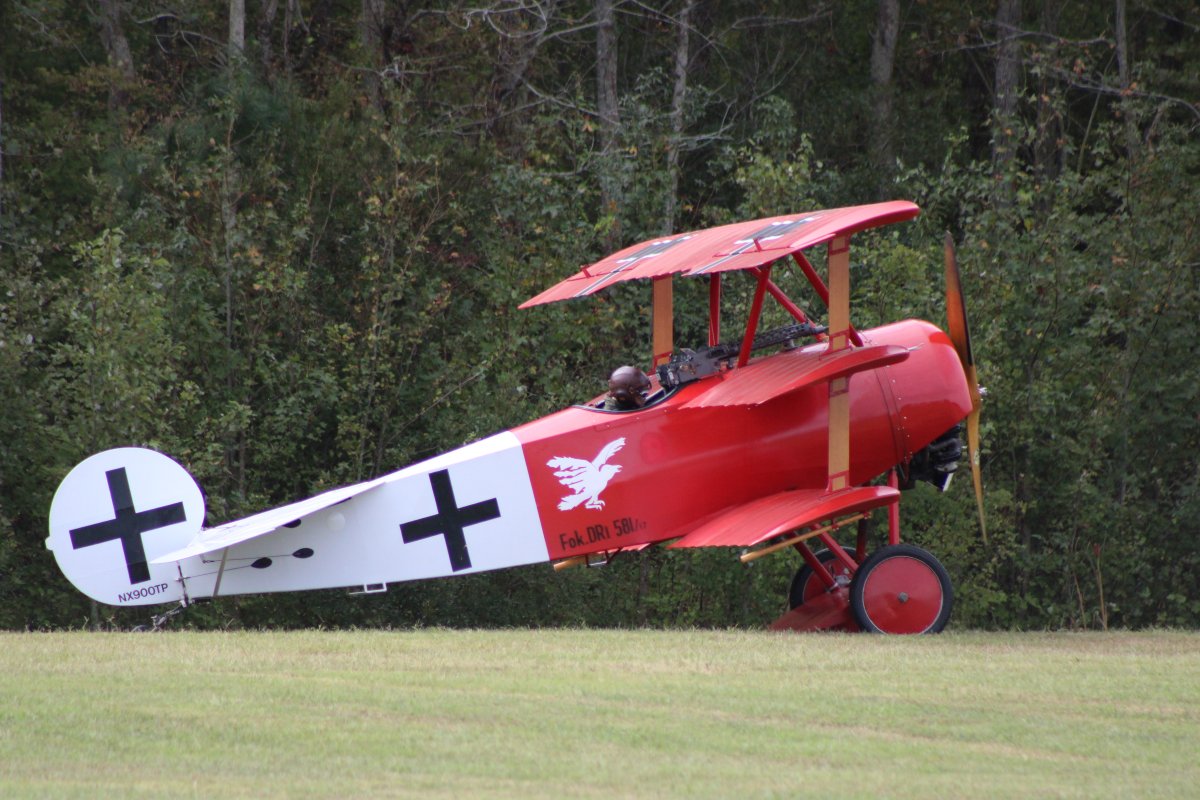 |
|
|
I can never get enough Triplane shots.
|
| |
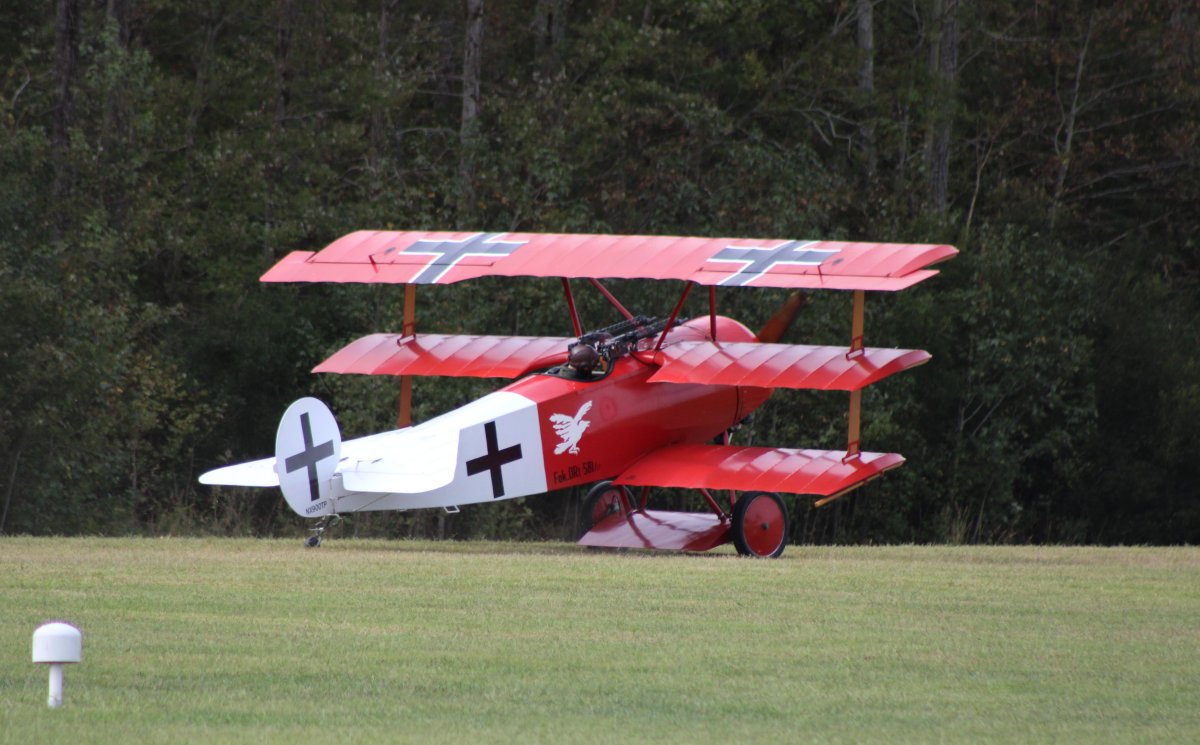 |
|
| I tried out my zoom lens for the first time. It's not auto-focus so the pics are not as sharp as the could be. |
| |
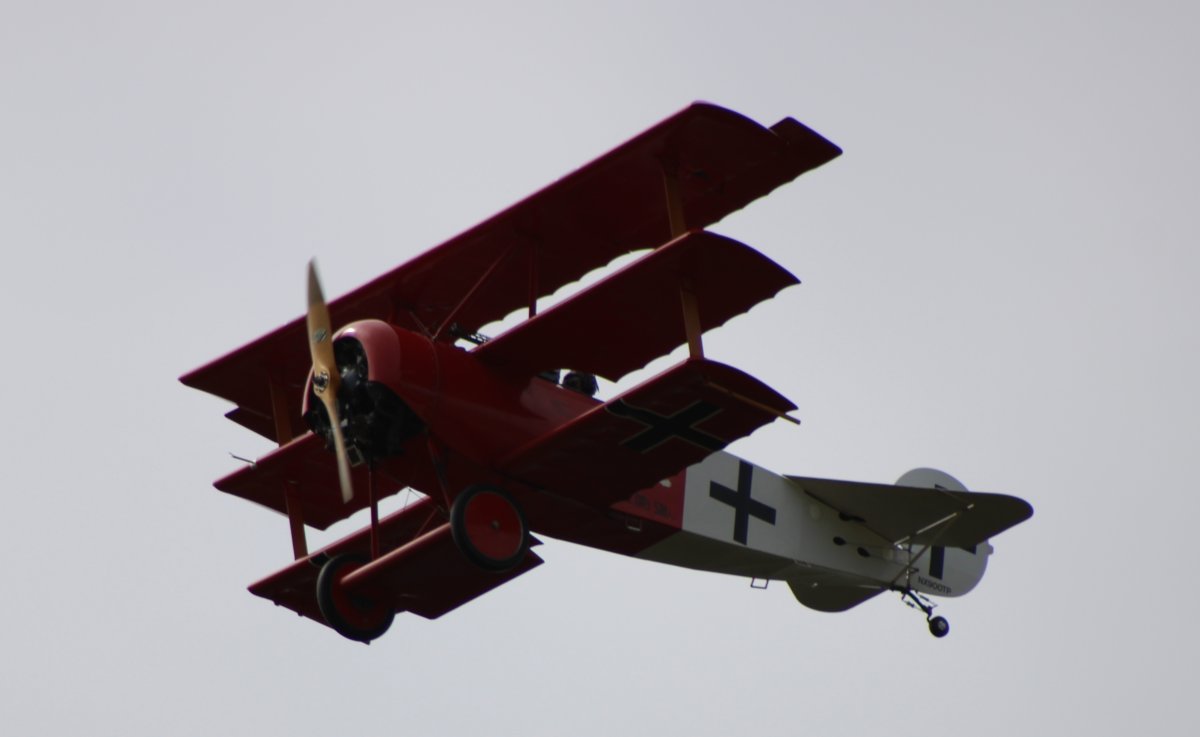 |
|
| The D-7 taxiis out. |
| |
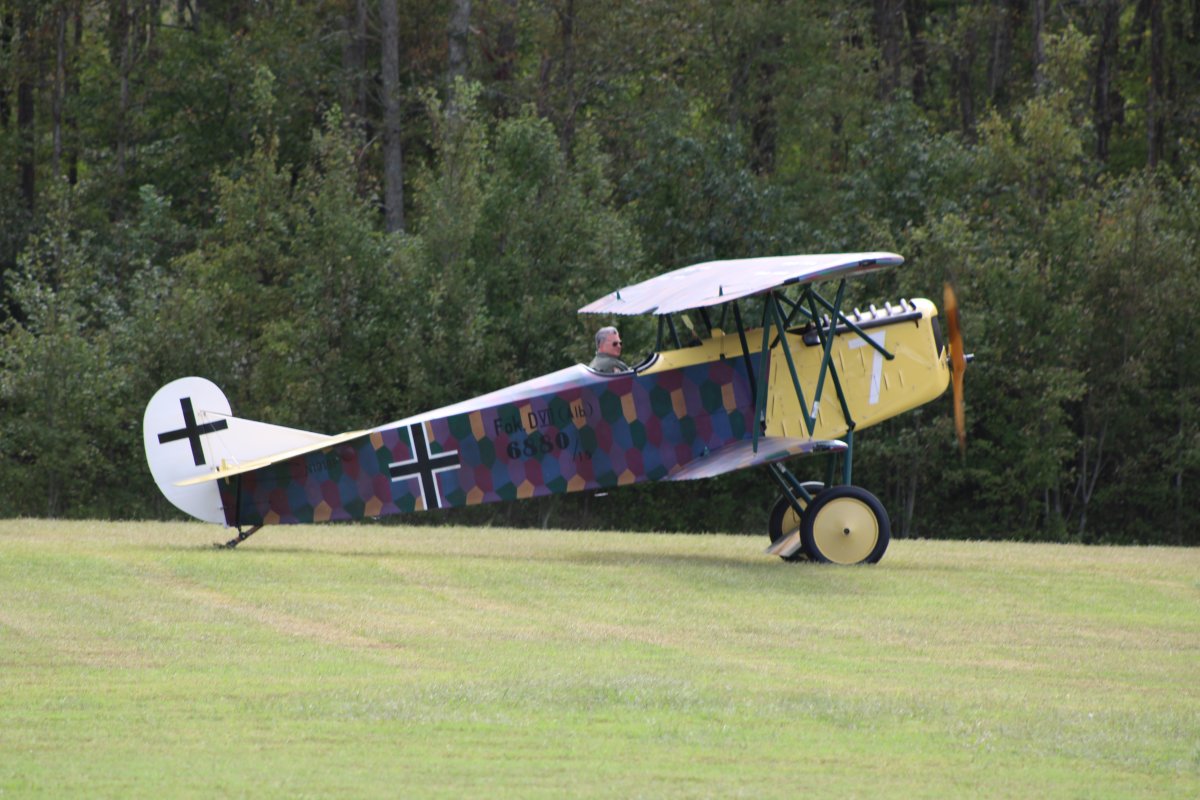 |
|
| The Sopwith Strutter taxiis out. |
| |
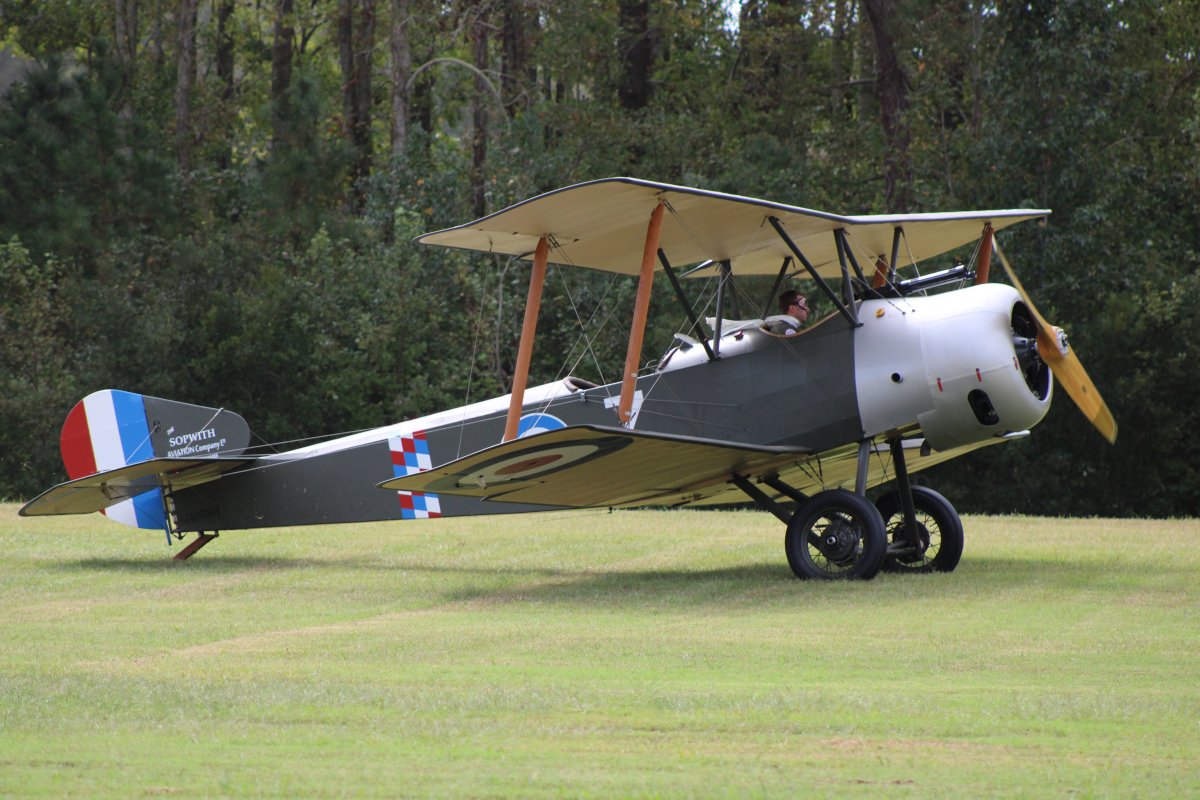 |
|
|
And the Eindecker.
|
| |
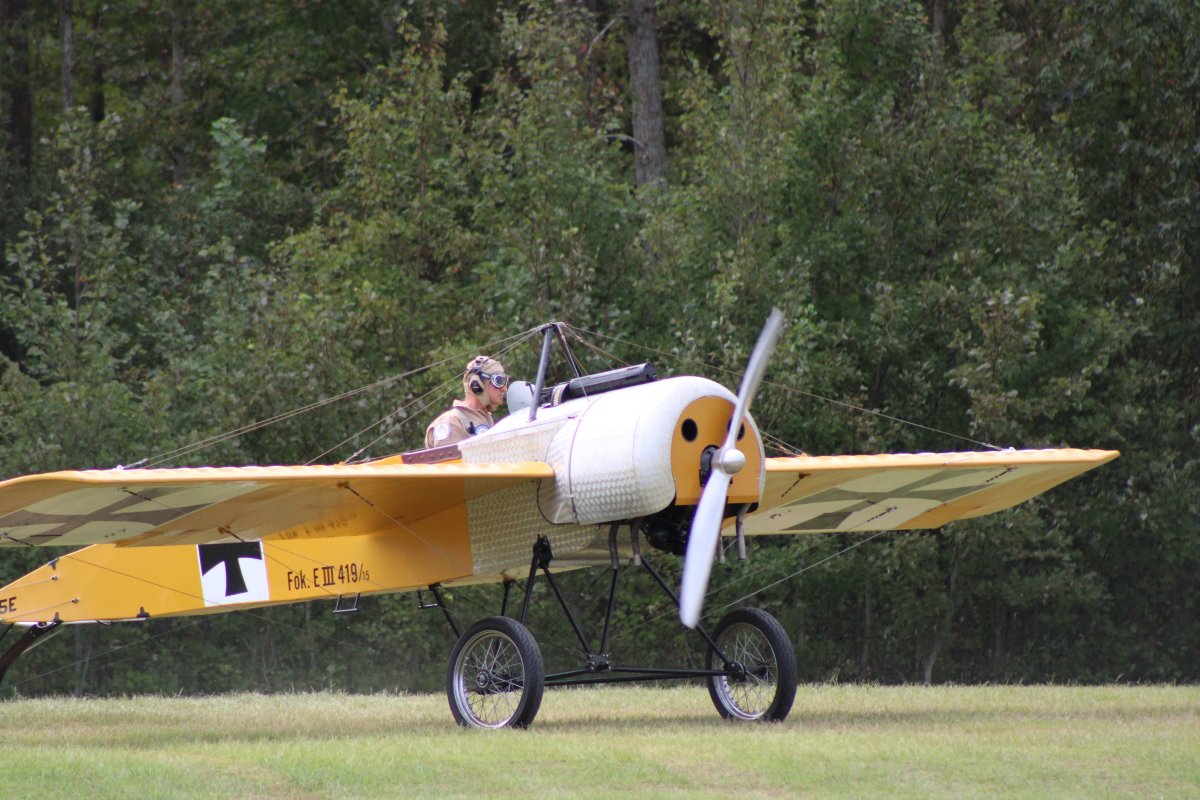 |
|
| There goes the Strutter and Triplane. |
| |
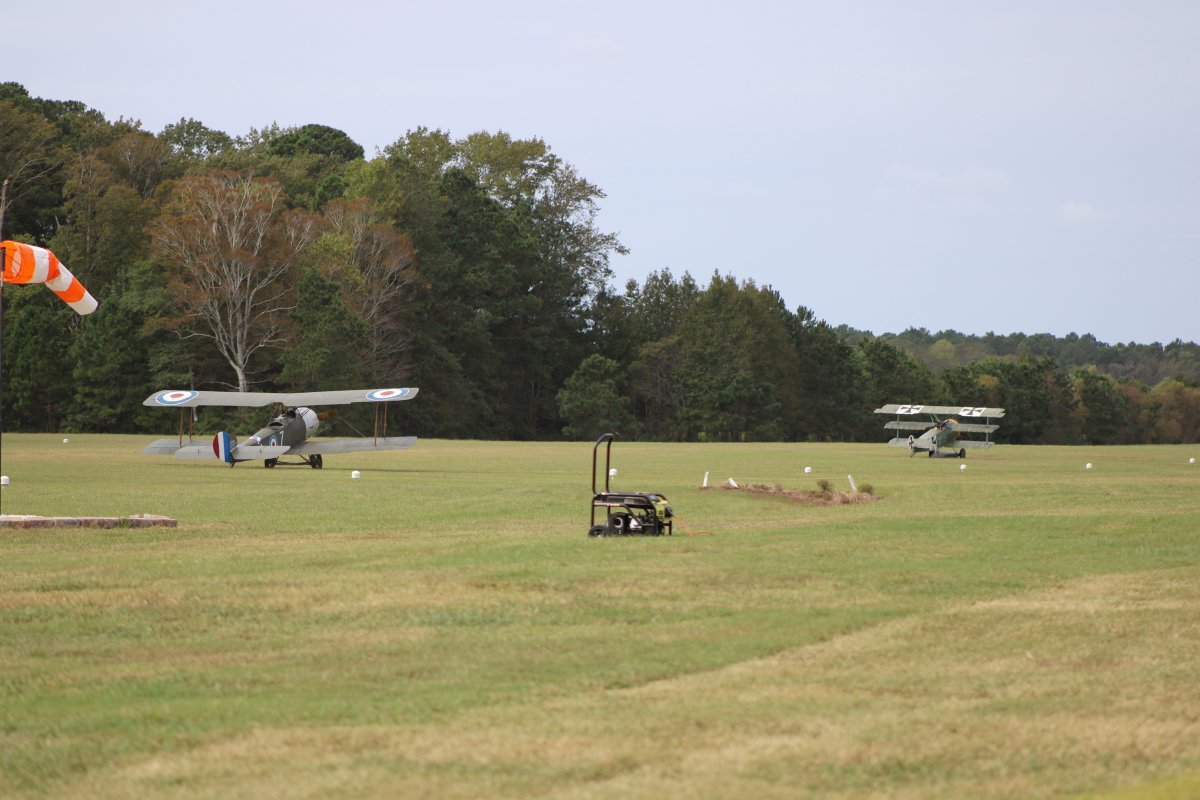 |
|
| Here comes the Triplane! |
| |
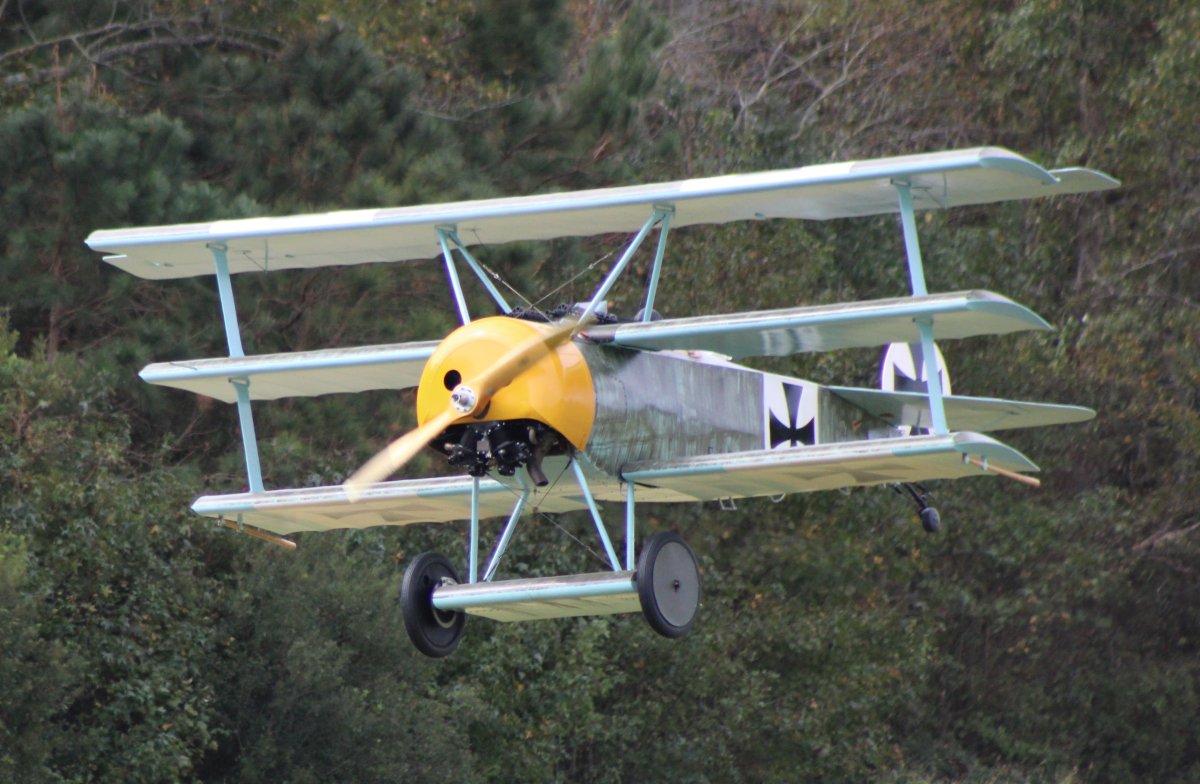 |
|
| And there it goes. |
| |
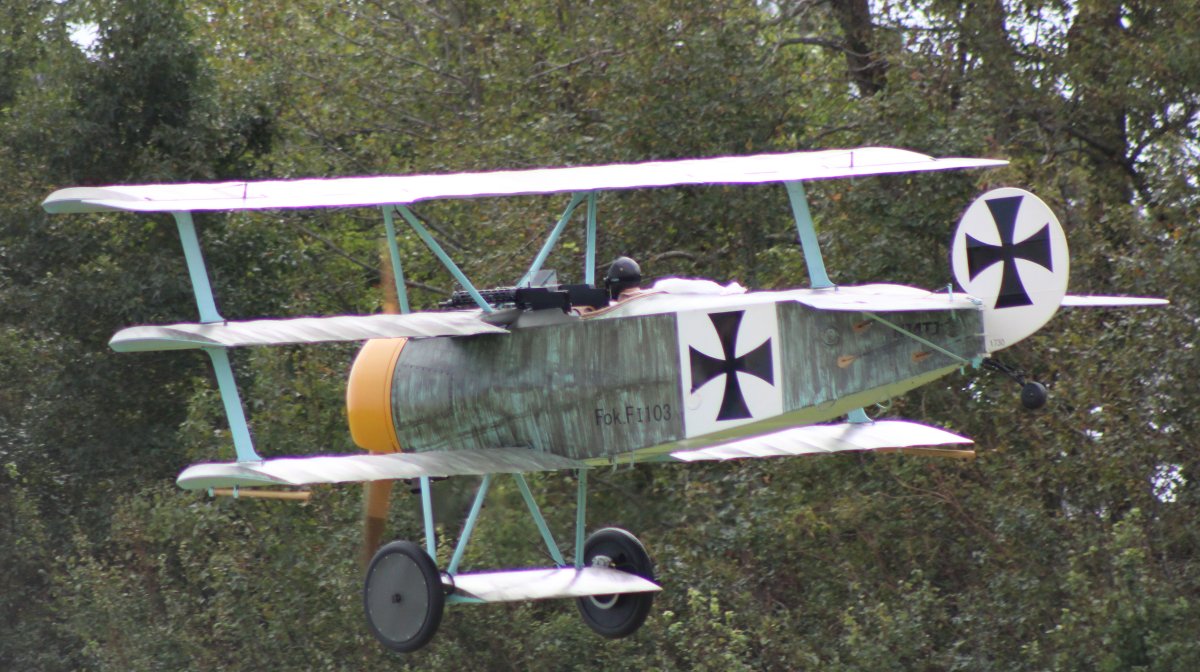 |
|
| There goes the Sopwith Strutter! |
| |
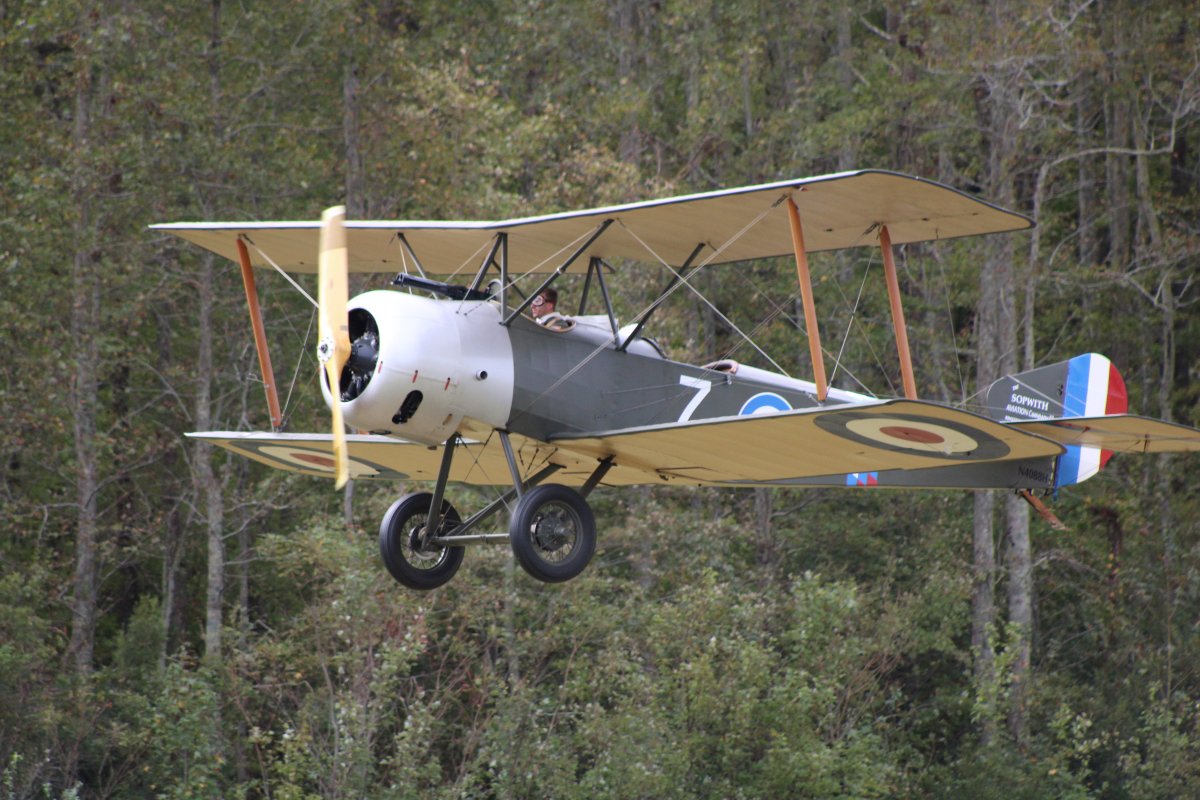 |
|
|
And the Fokker D-8.
|
| |
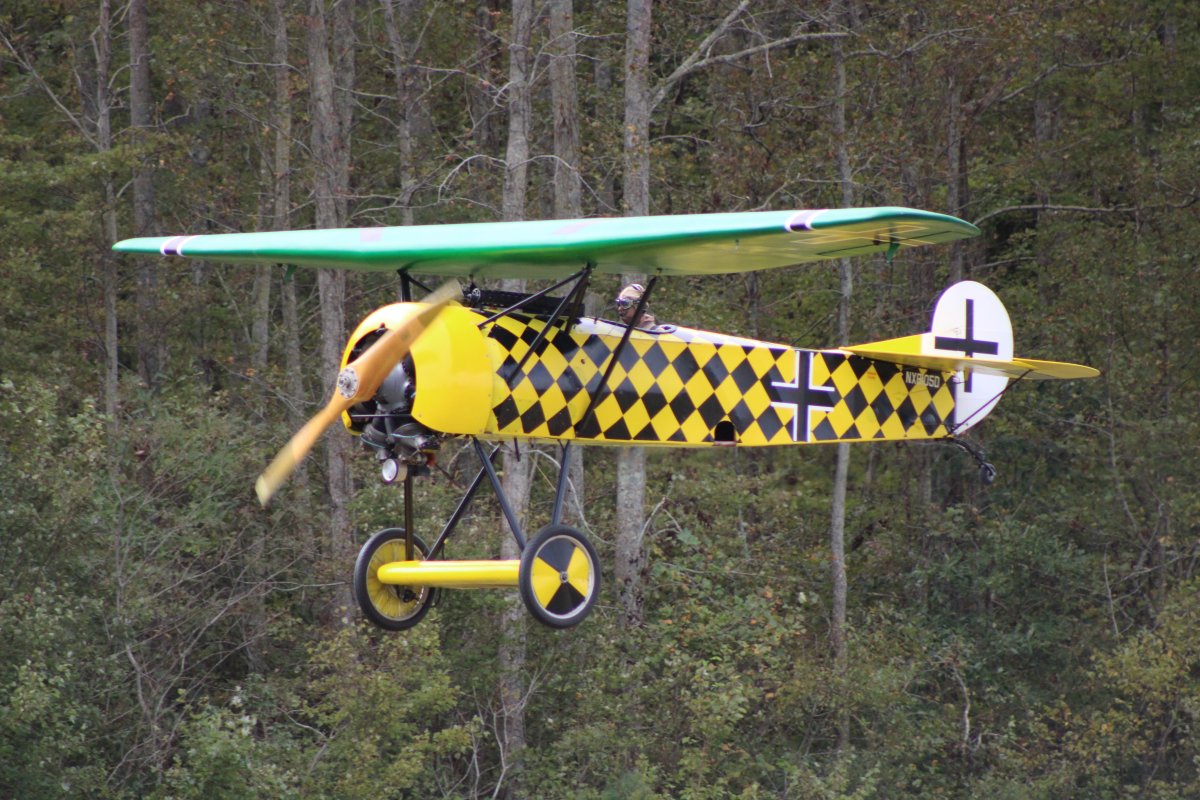 |
|
| One of the Triplanes overhead. |
| |
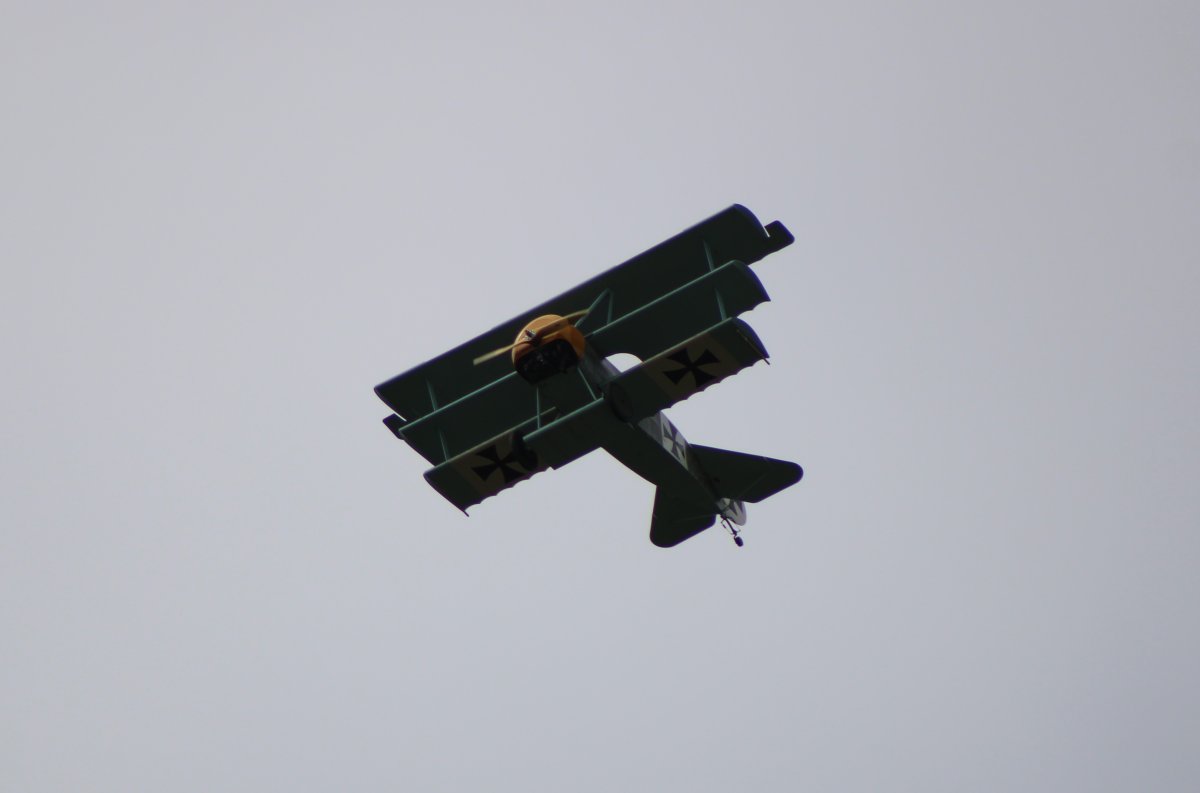 |
|
| The red/white Triplane taxiis back. |
| |
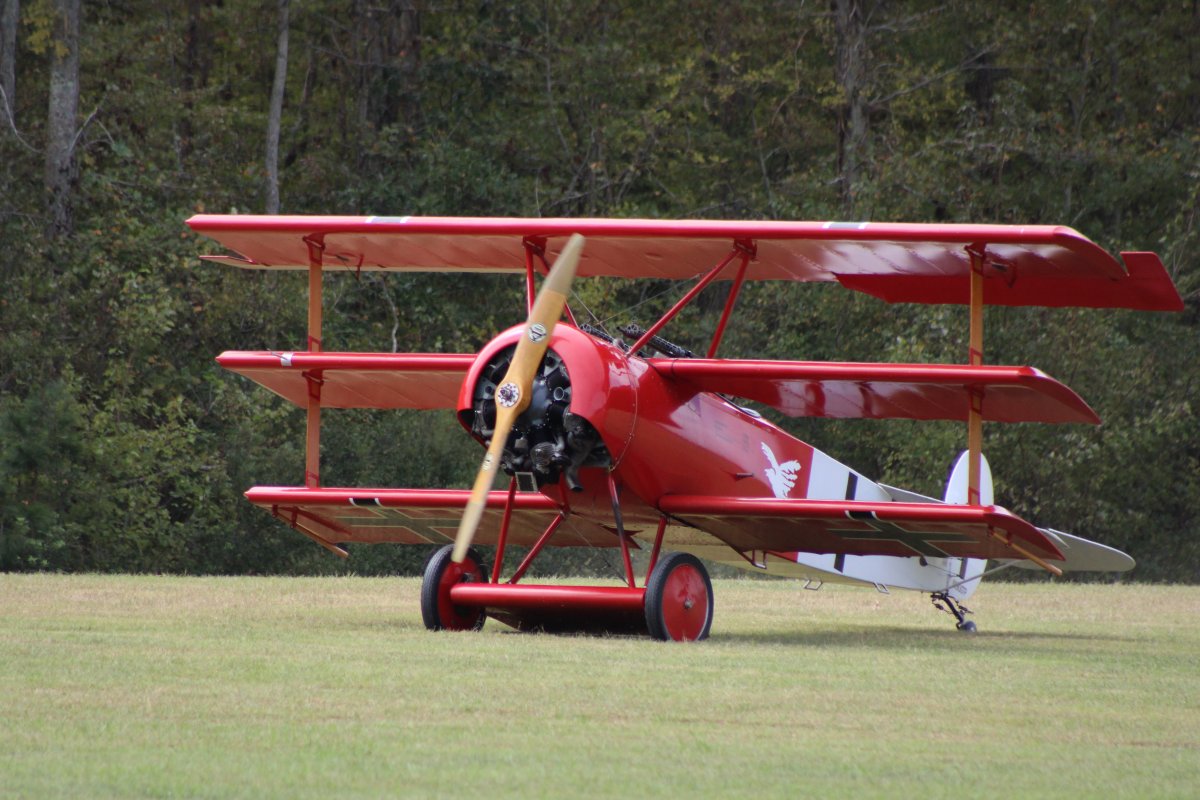 |
|
|
DR-1 and D-8 patrolling.
|
| |
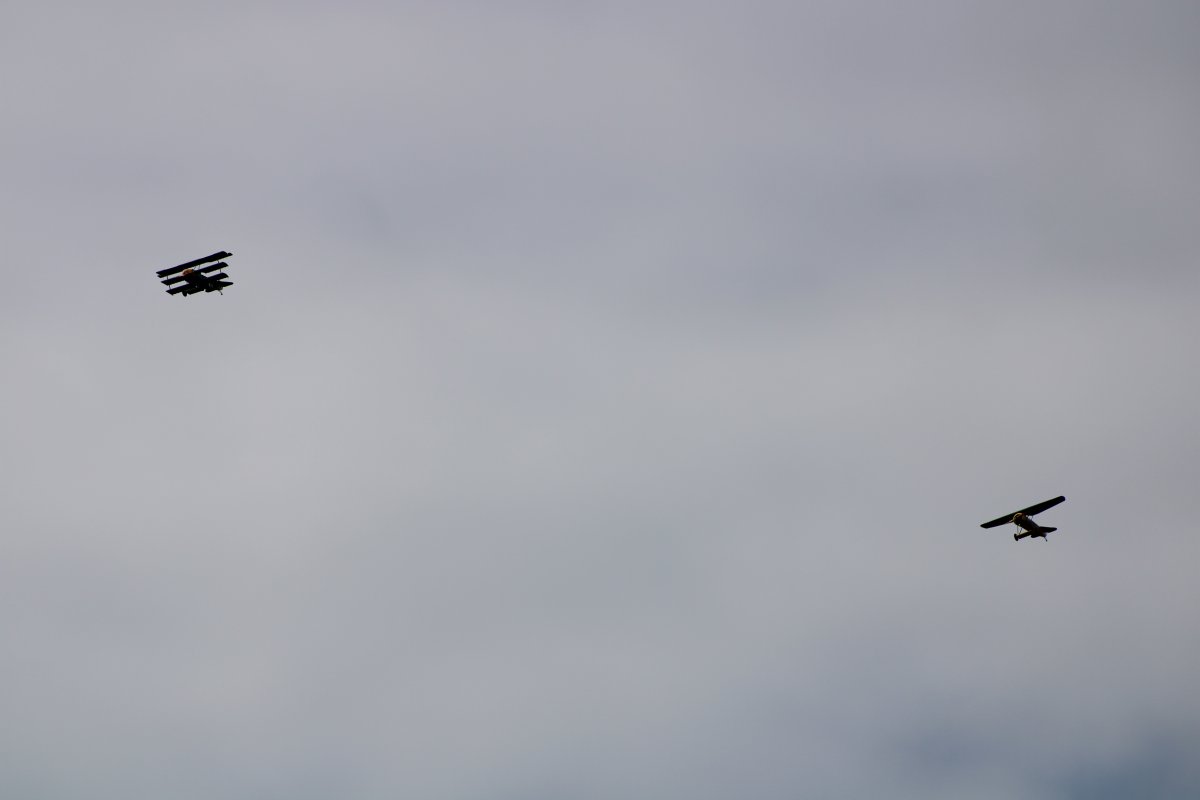 |
|
| The Bleriot hit by a gust of wind on takeoff. |
| |
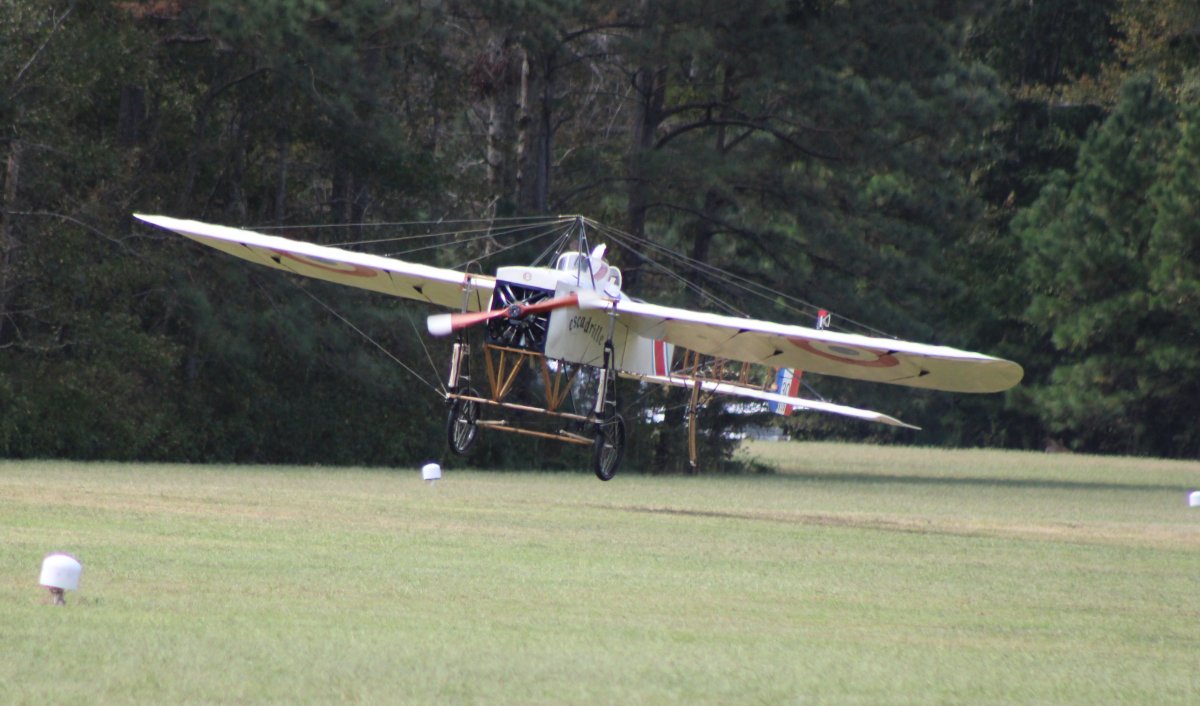 |
|
|
|
| |
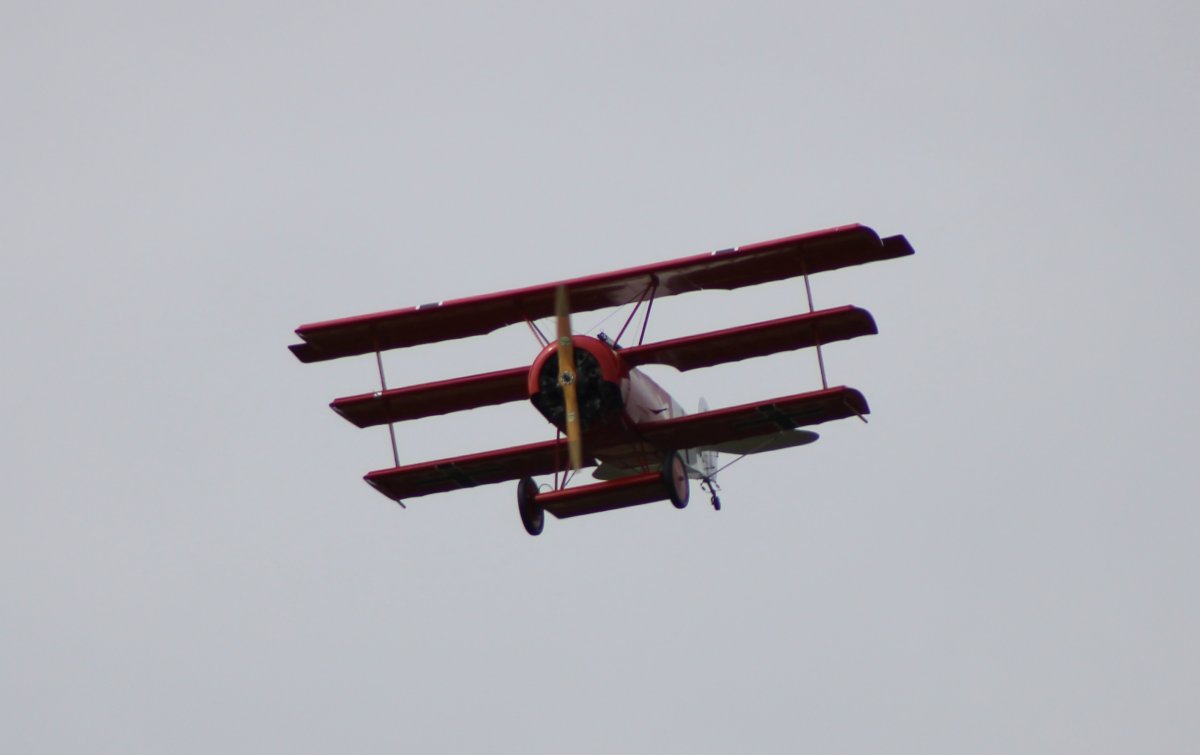 |
|
|
The wind was judged too strong for the second half of the World War One airshow, so they flew some of the heavier, more powerful World War Two fighters. Here are a P-40 and Spitfire in loose formation. Don't see that too often!
|
| |
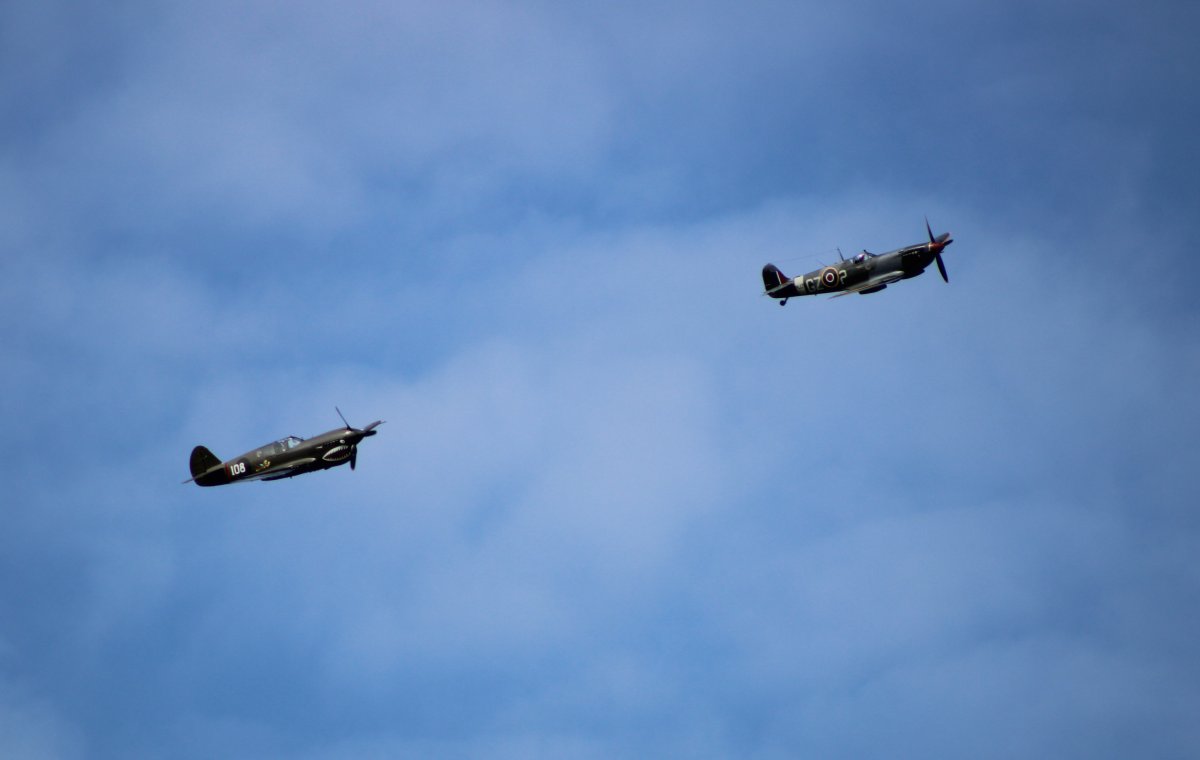 |
|
| The Corsair takes off. |
| |
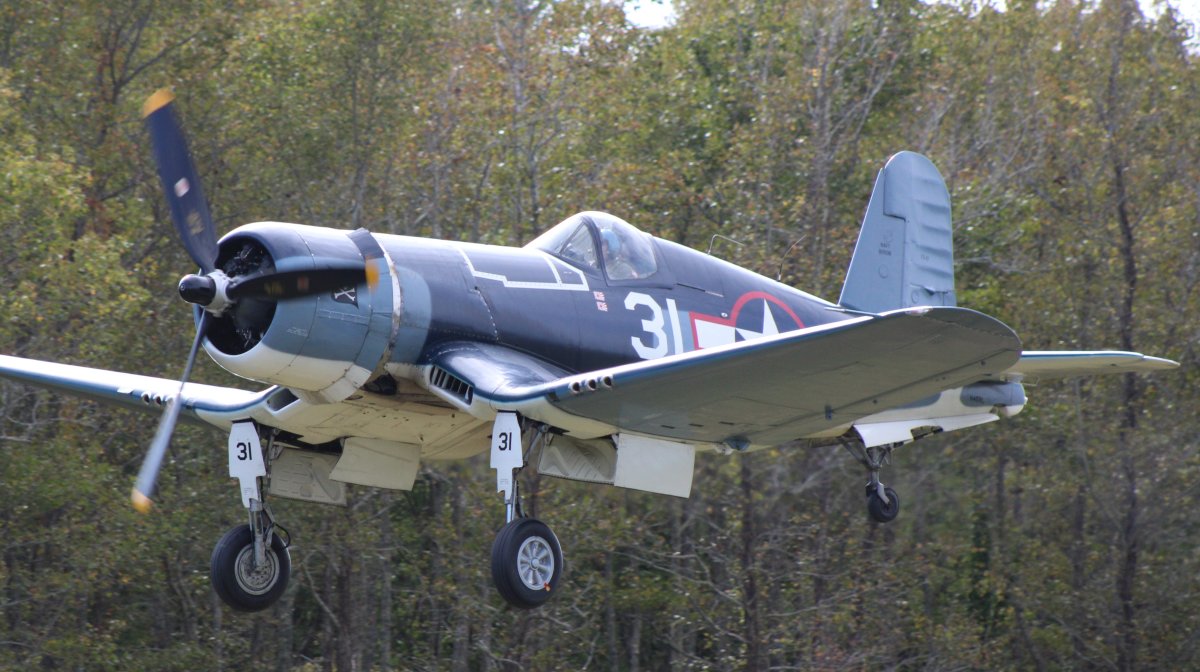 |
|
| There he goes, showing the distinctive gull wings. |
| |
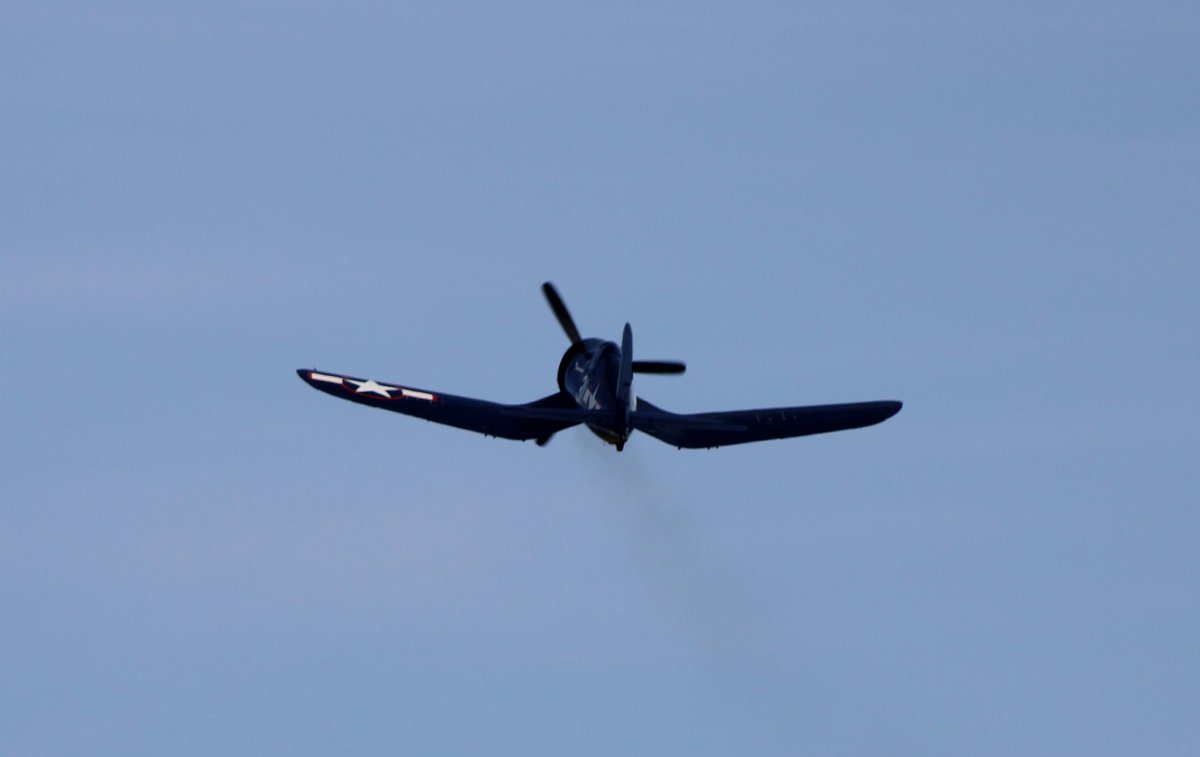 |
|
|
After the show, we hopped in the RV-7 and were soon in the air looking down at the Military Aviation Museum.
|
| |
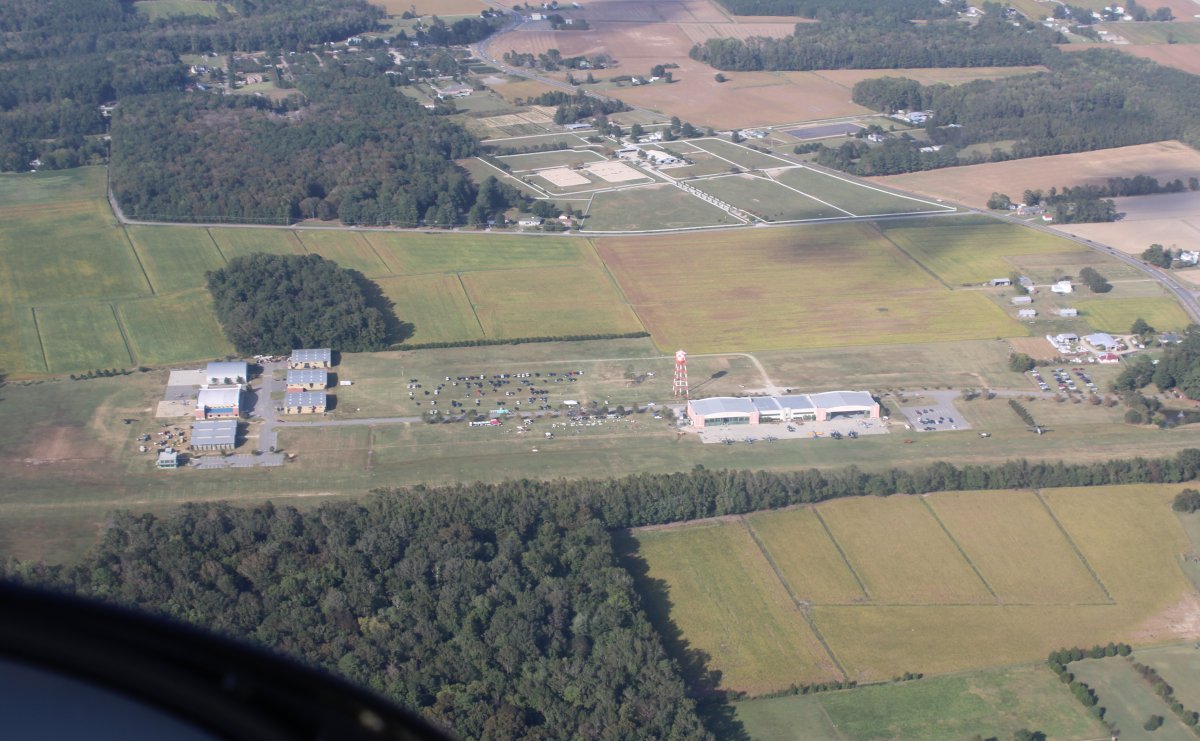 |
|
| The weather had cleared and we were able to climb high. We flew right over Norfolk. I knew the Iowa-class battleship U.S.S. Wisconson (BB-64) was down there somewhere but wasn't sure exactly where. And then, there it was! It looks small compared to that big cruise ship. |
| |
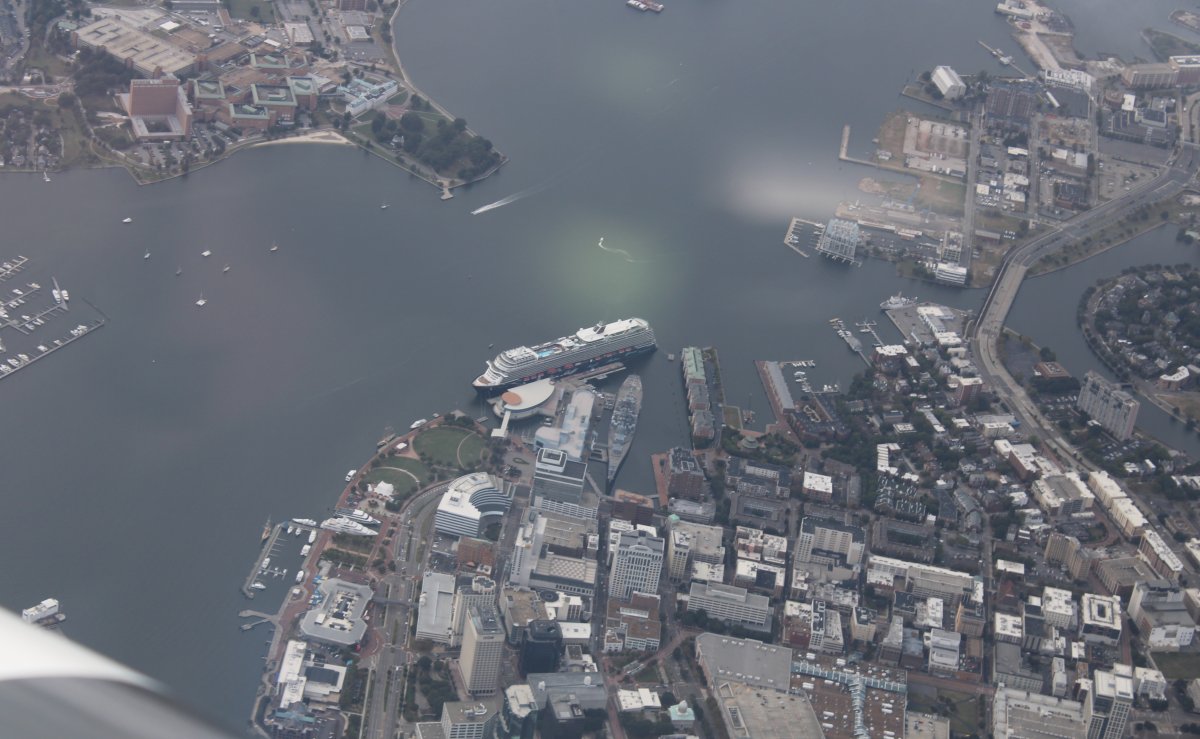 |
|
|
Leaving Leesburg Airport after dropping Jim off.
|
| |
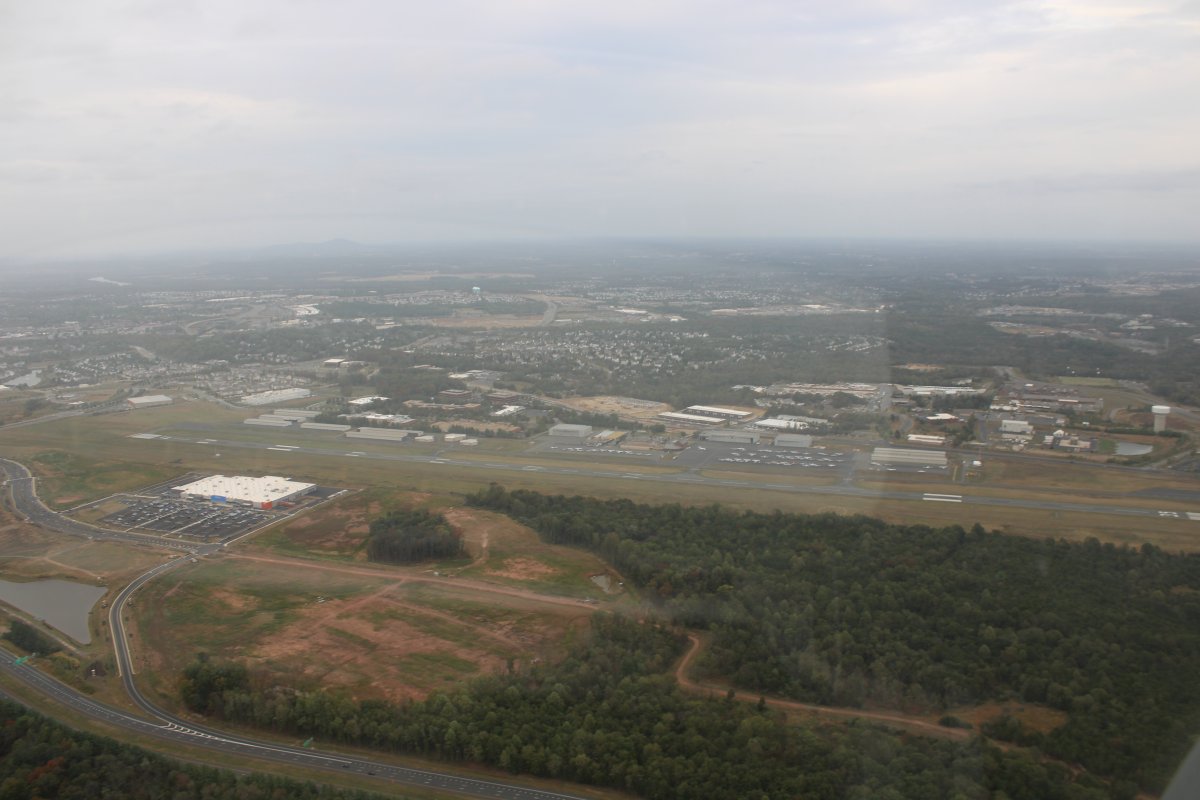 |
|
| Crossing Baltimore, with the Back River ahead, a familiar sight. |
| |
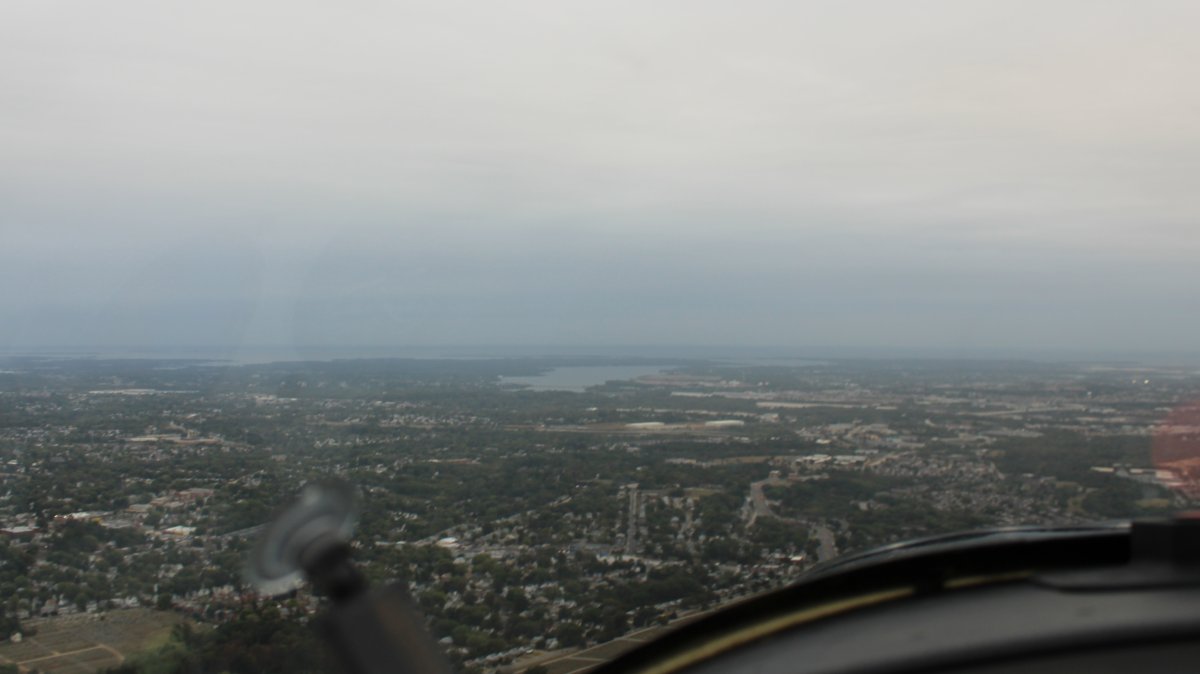 |
|
| |
| |
|
|
|
|
|
|






























































